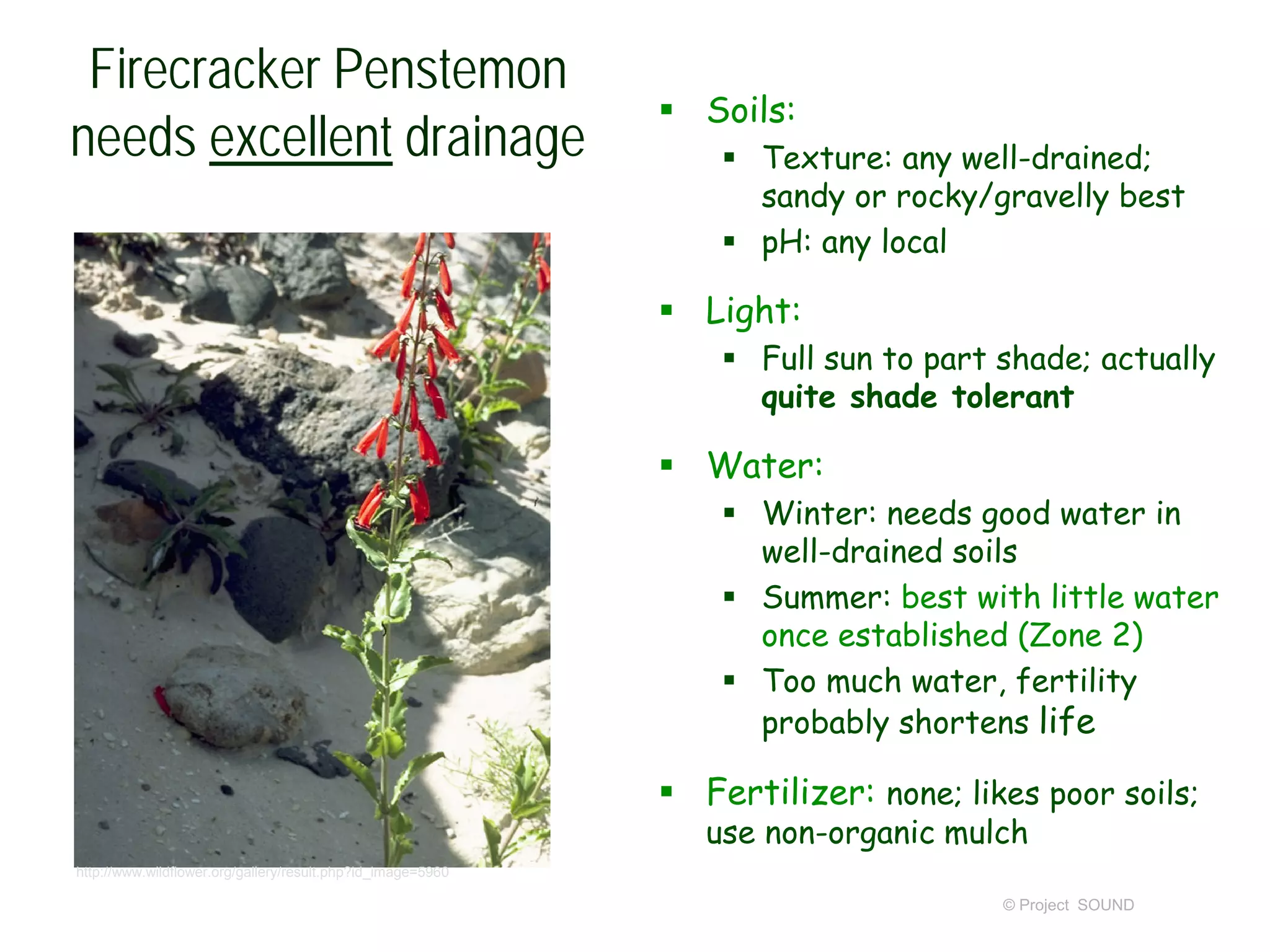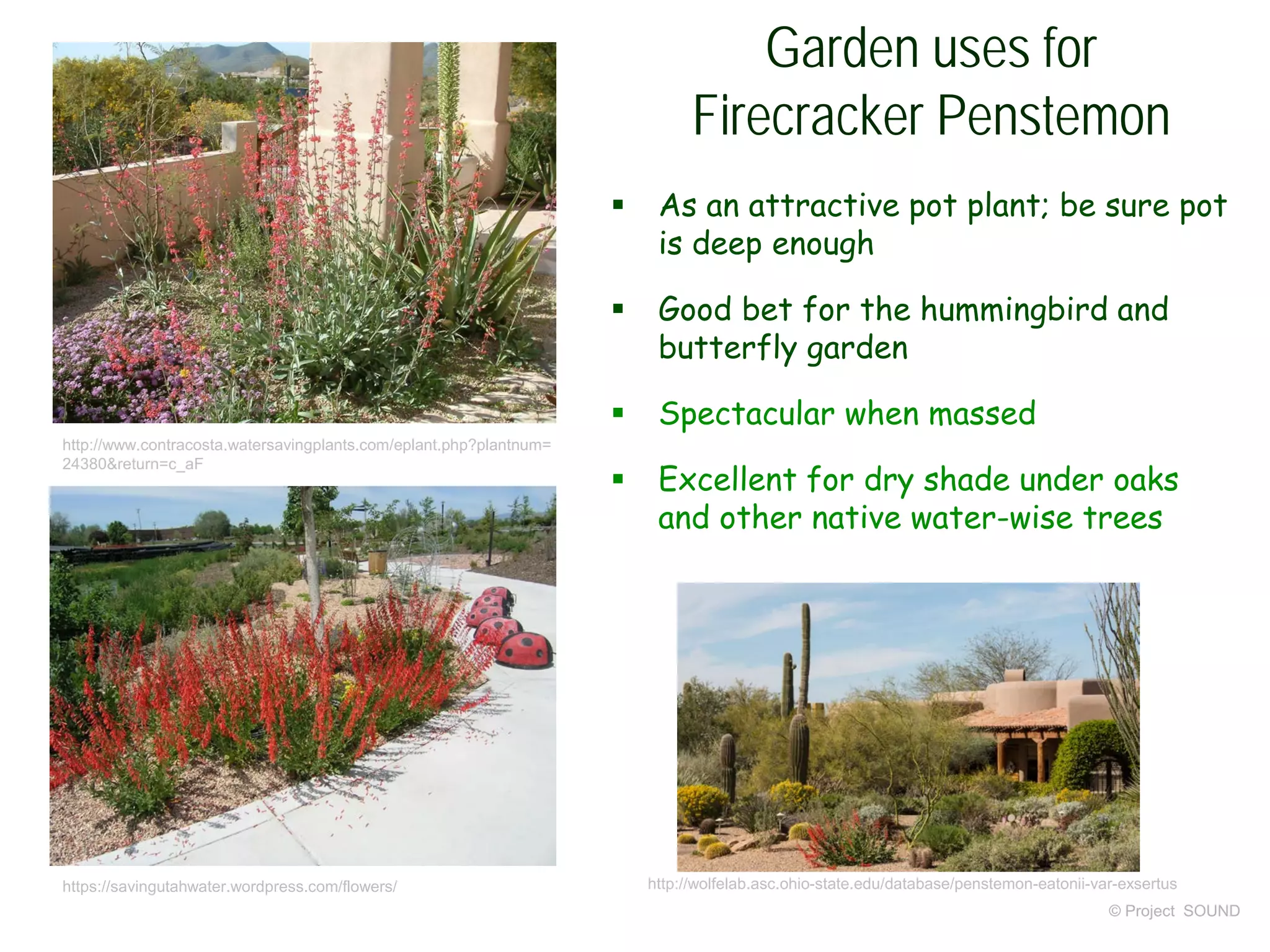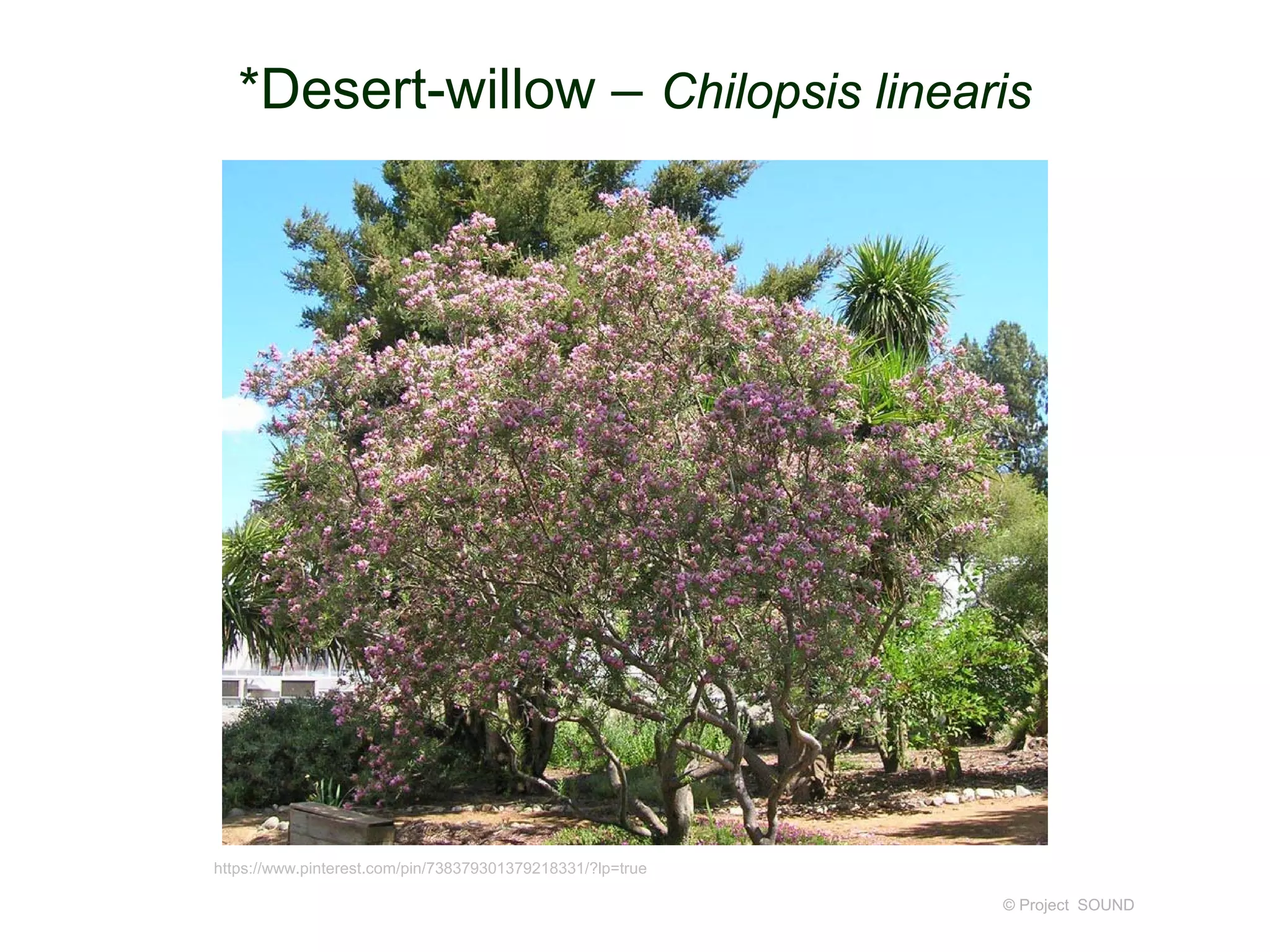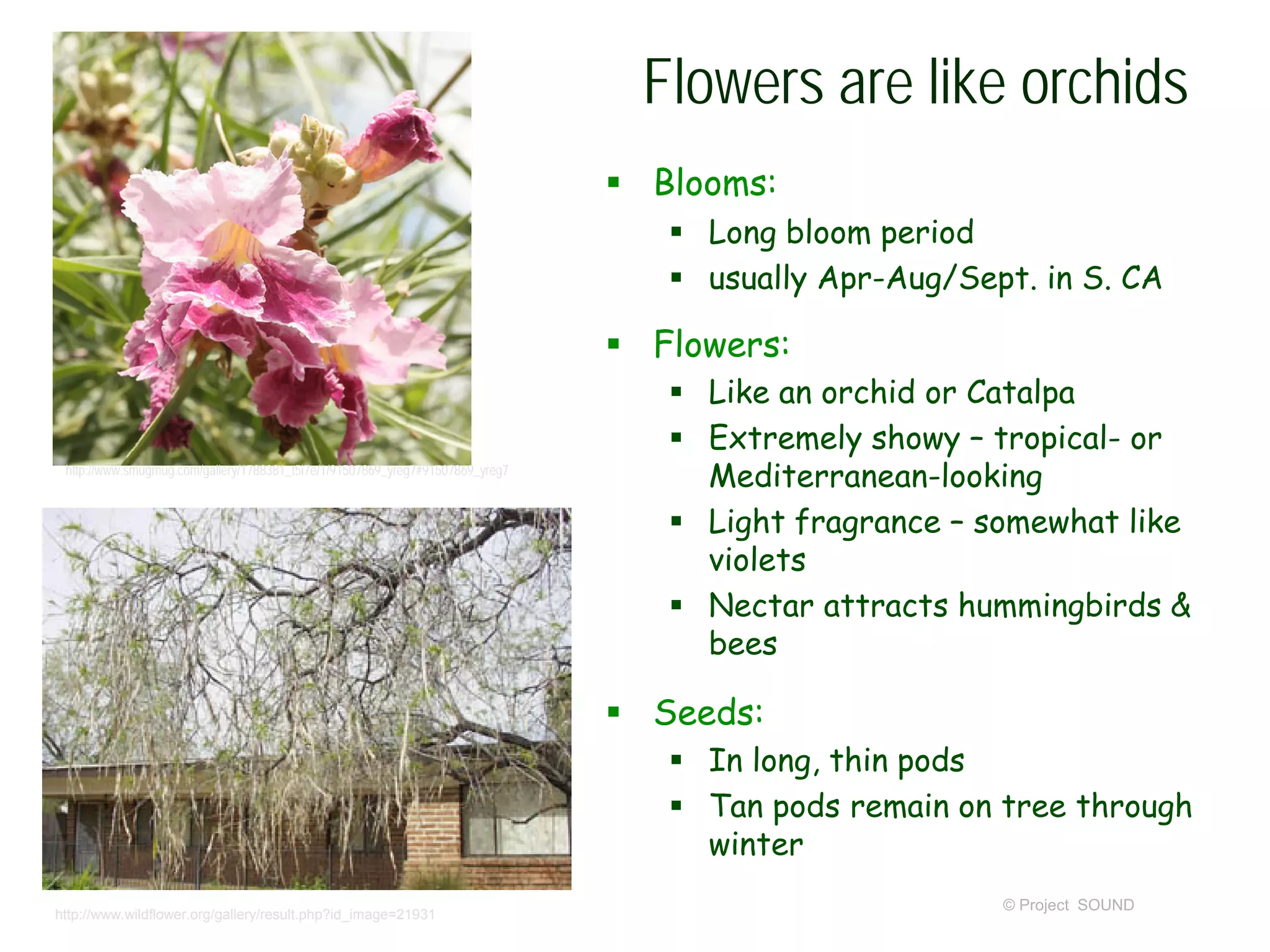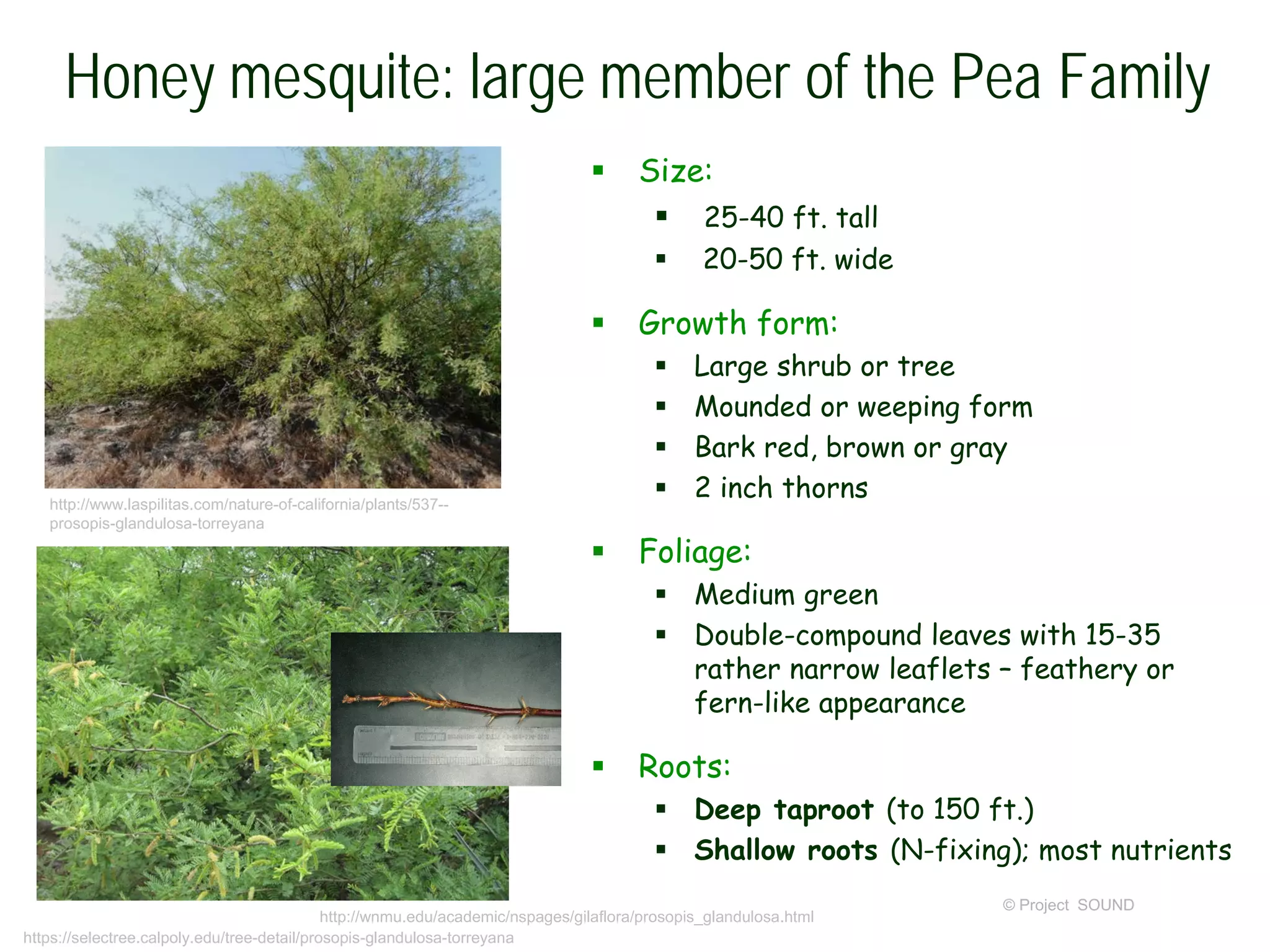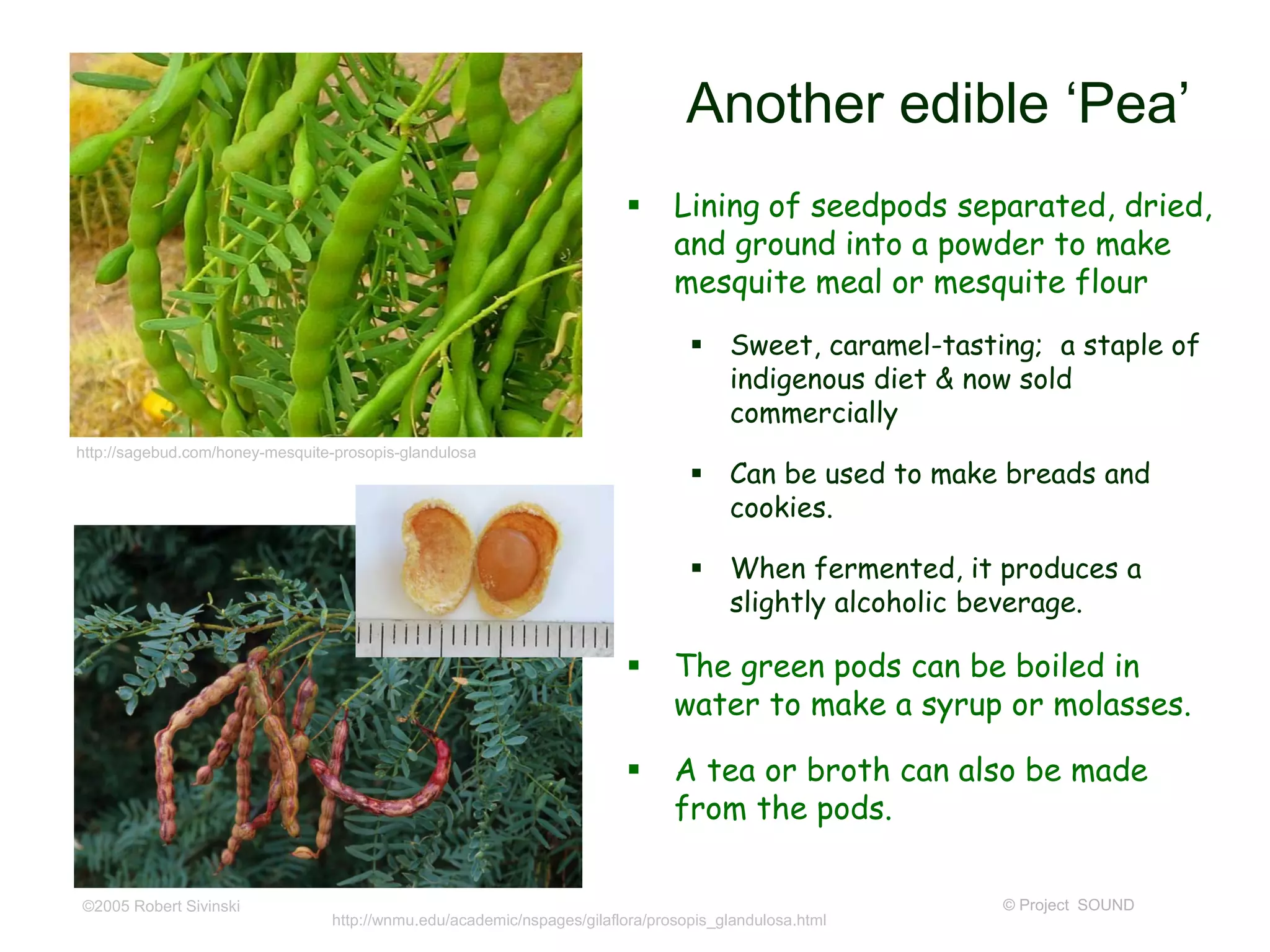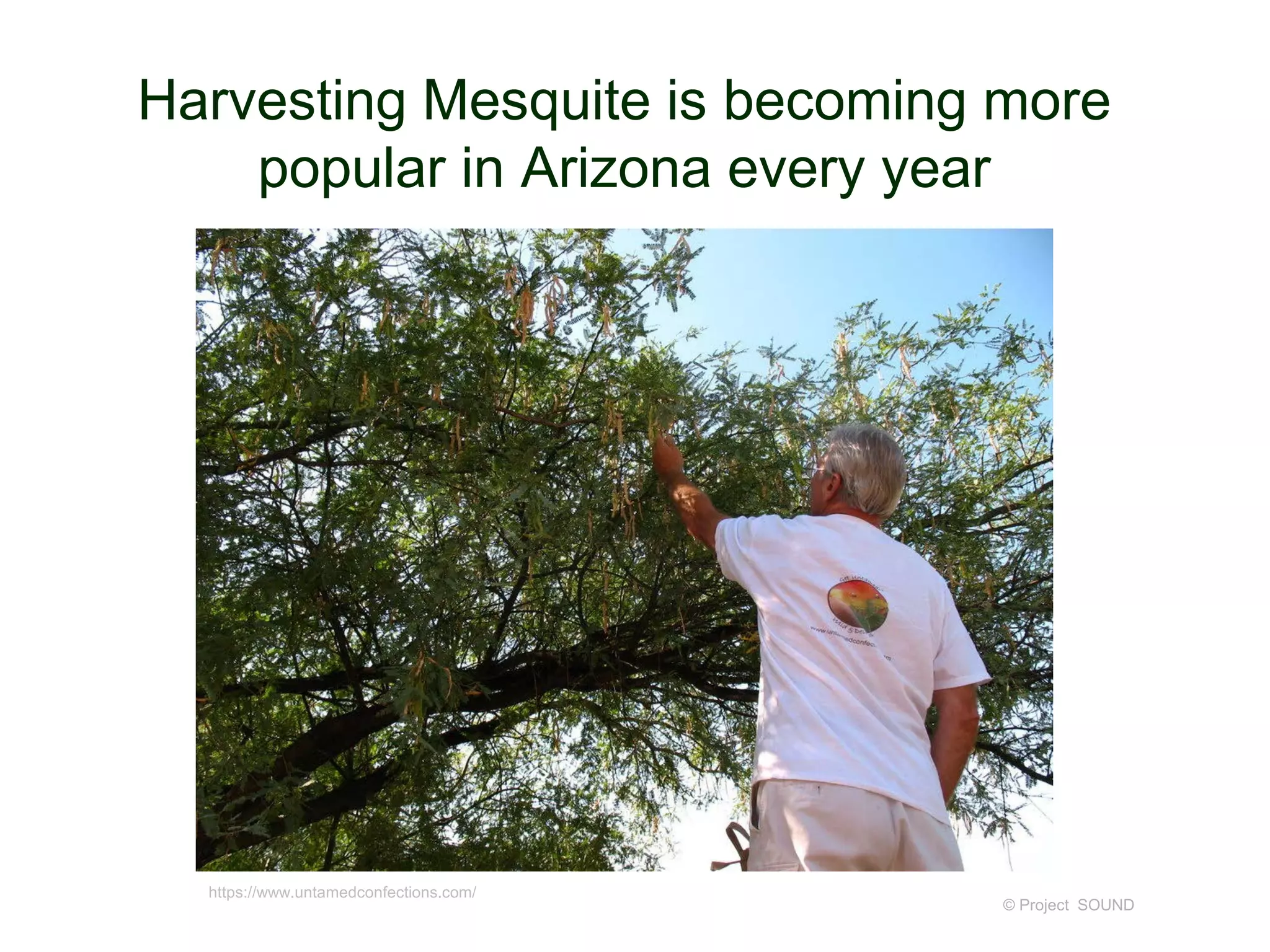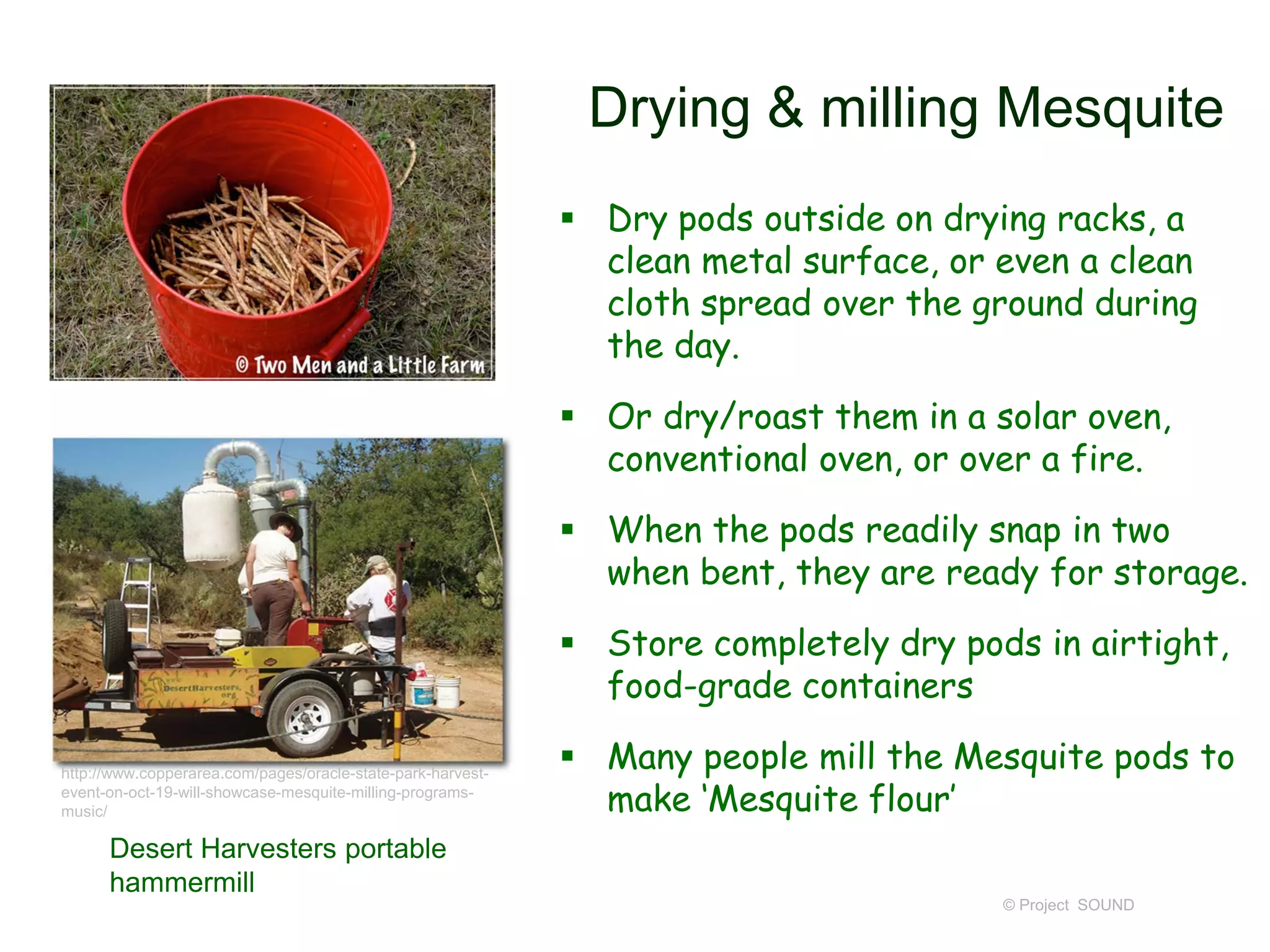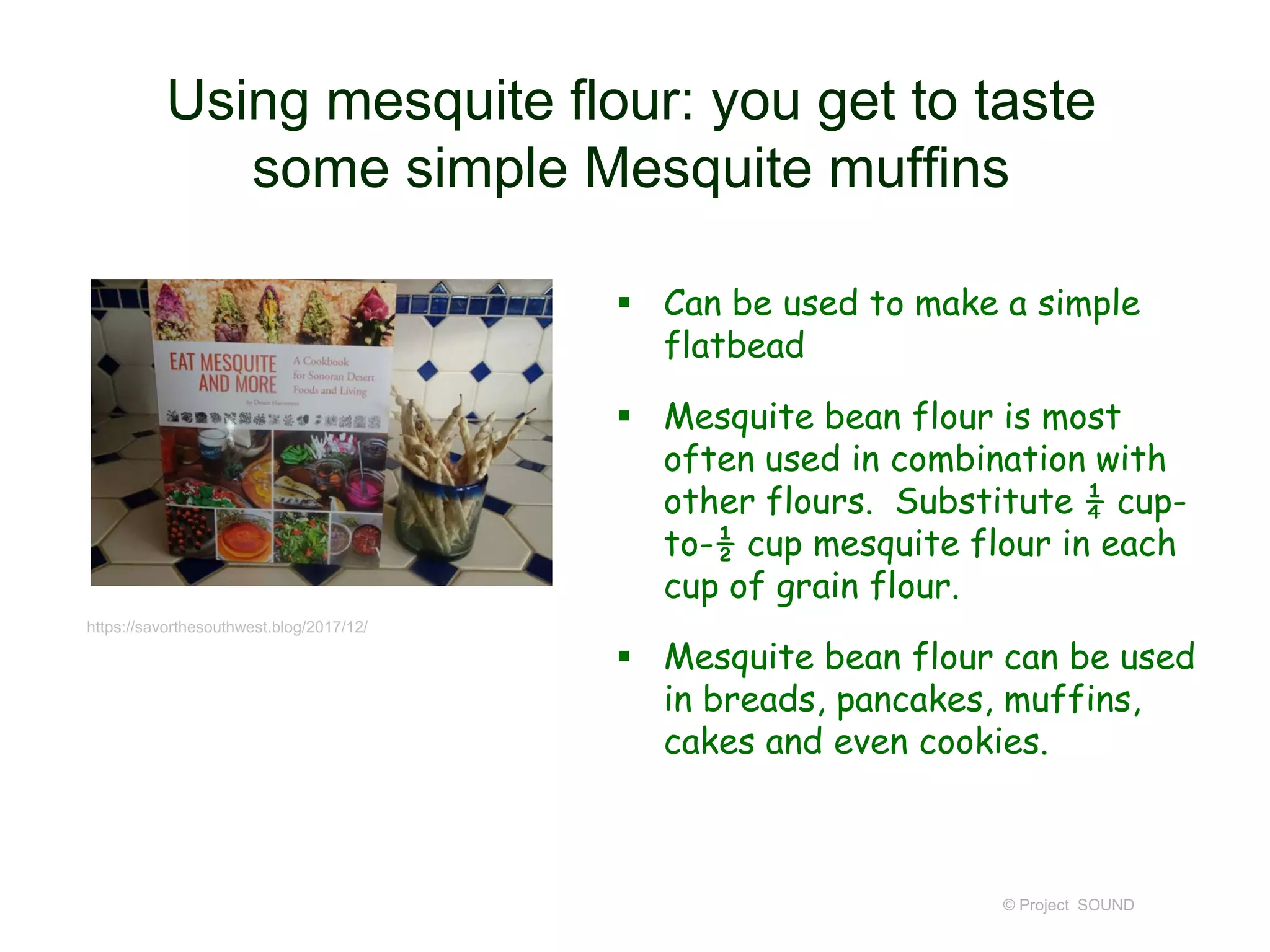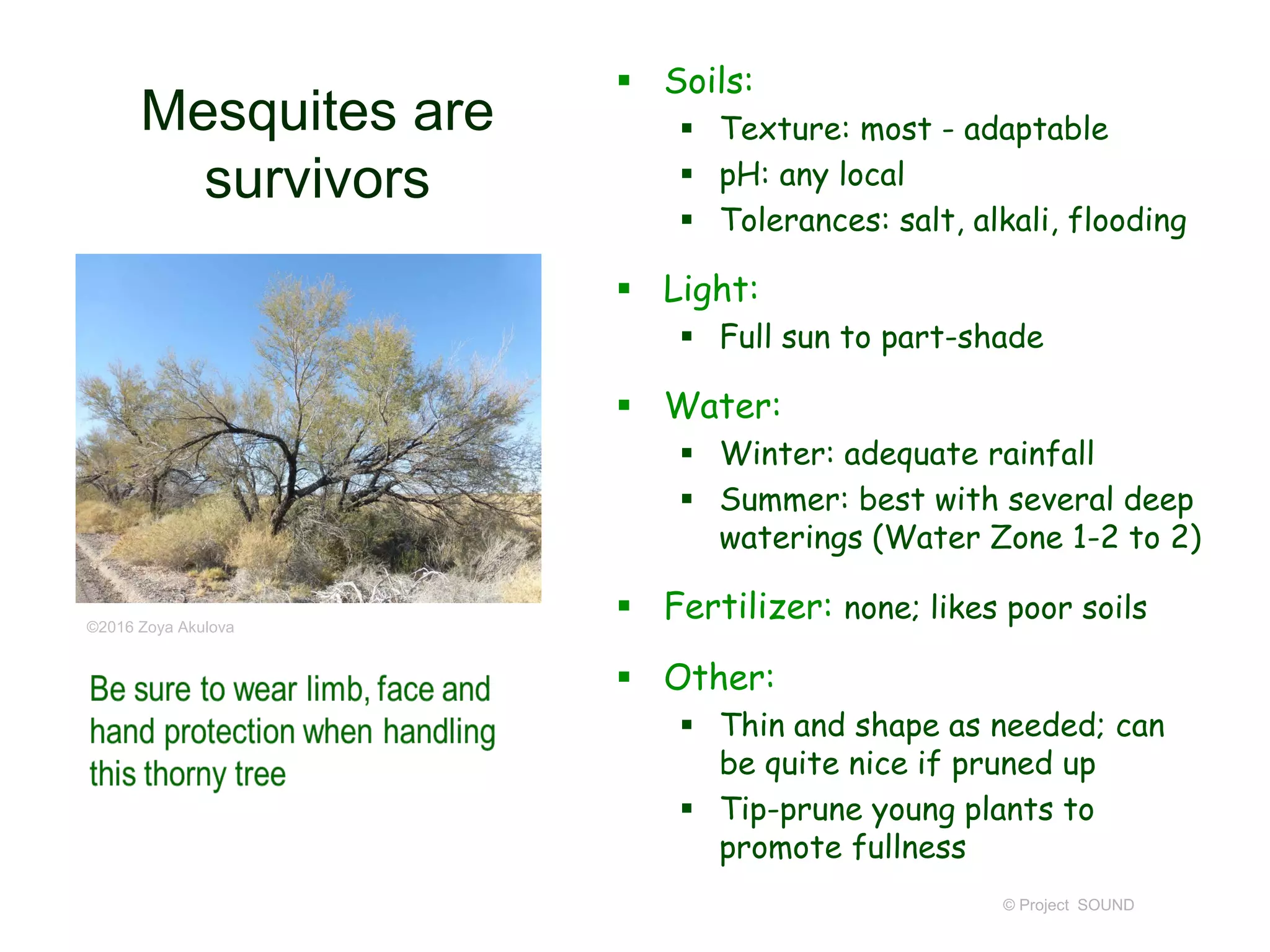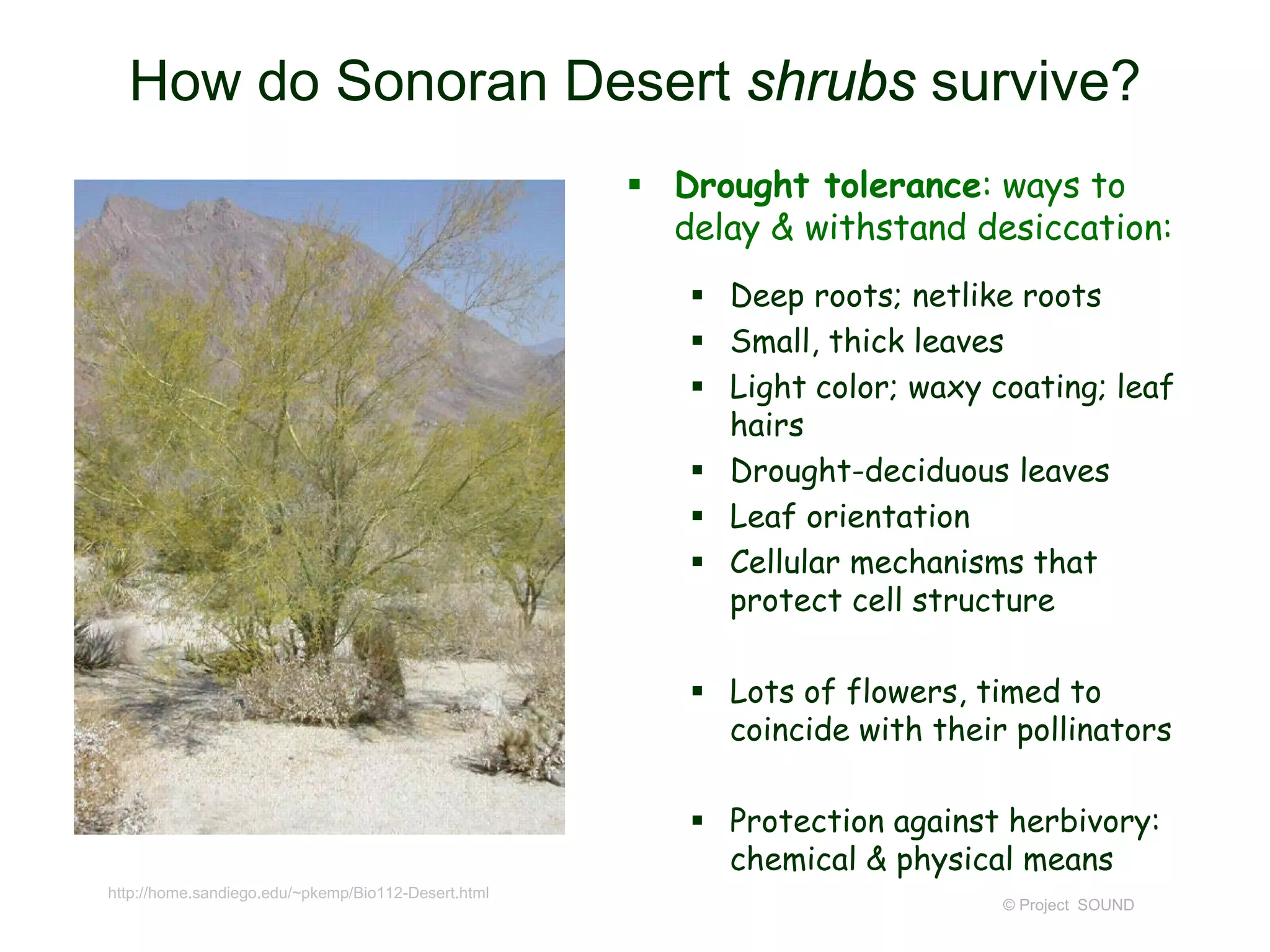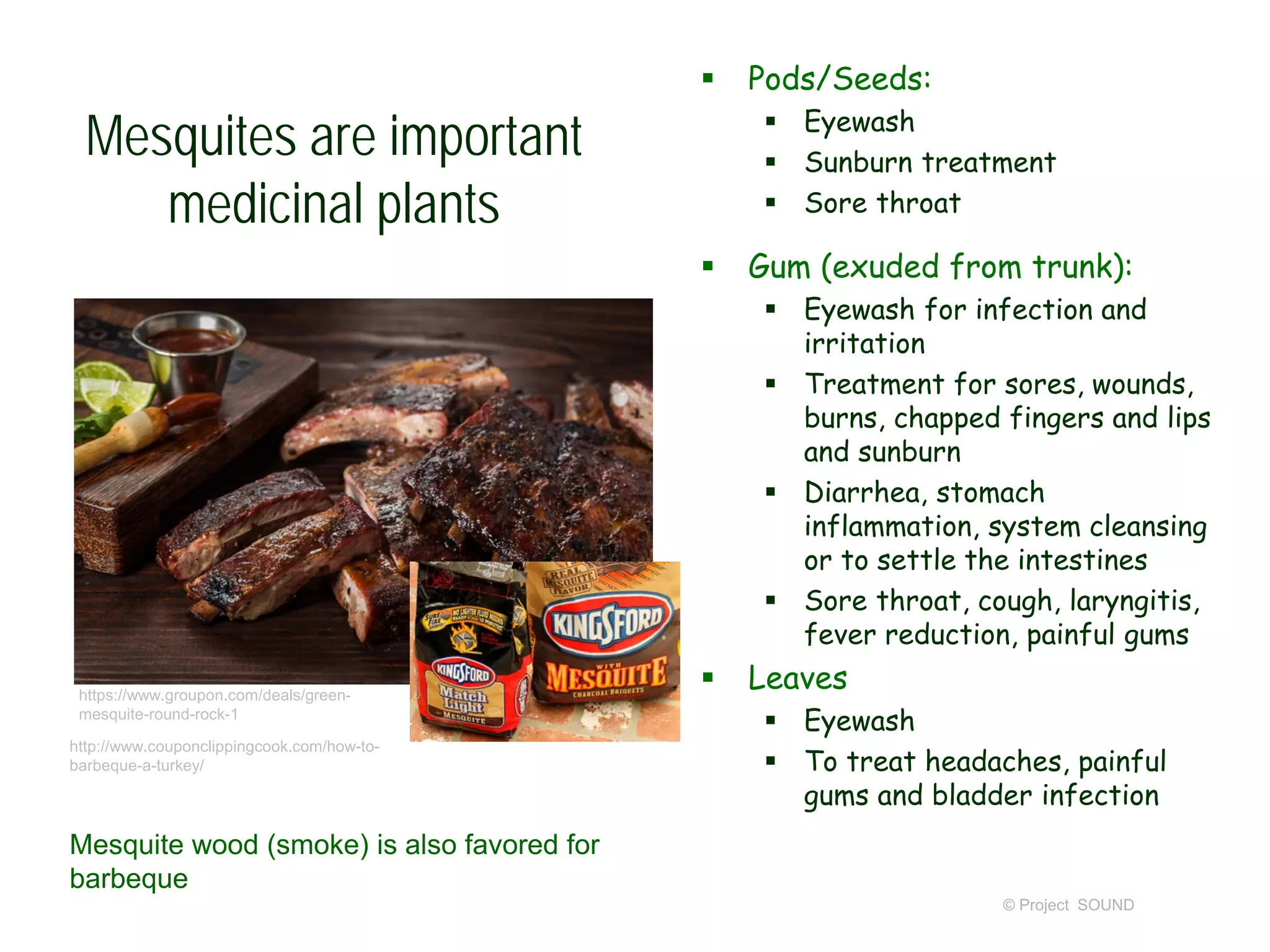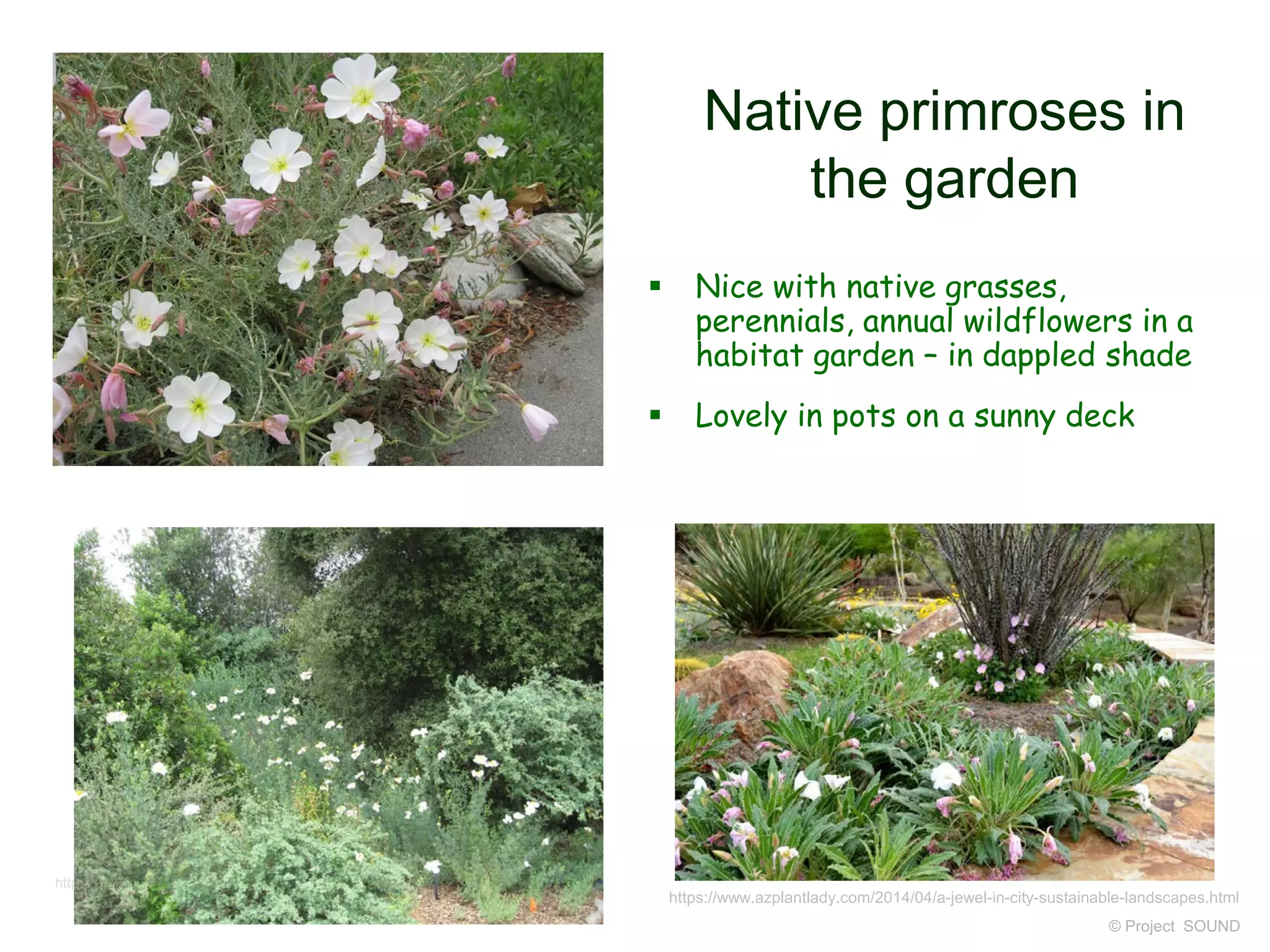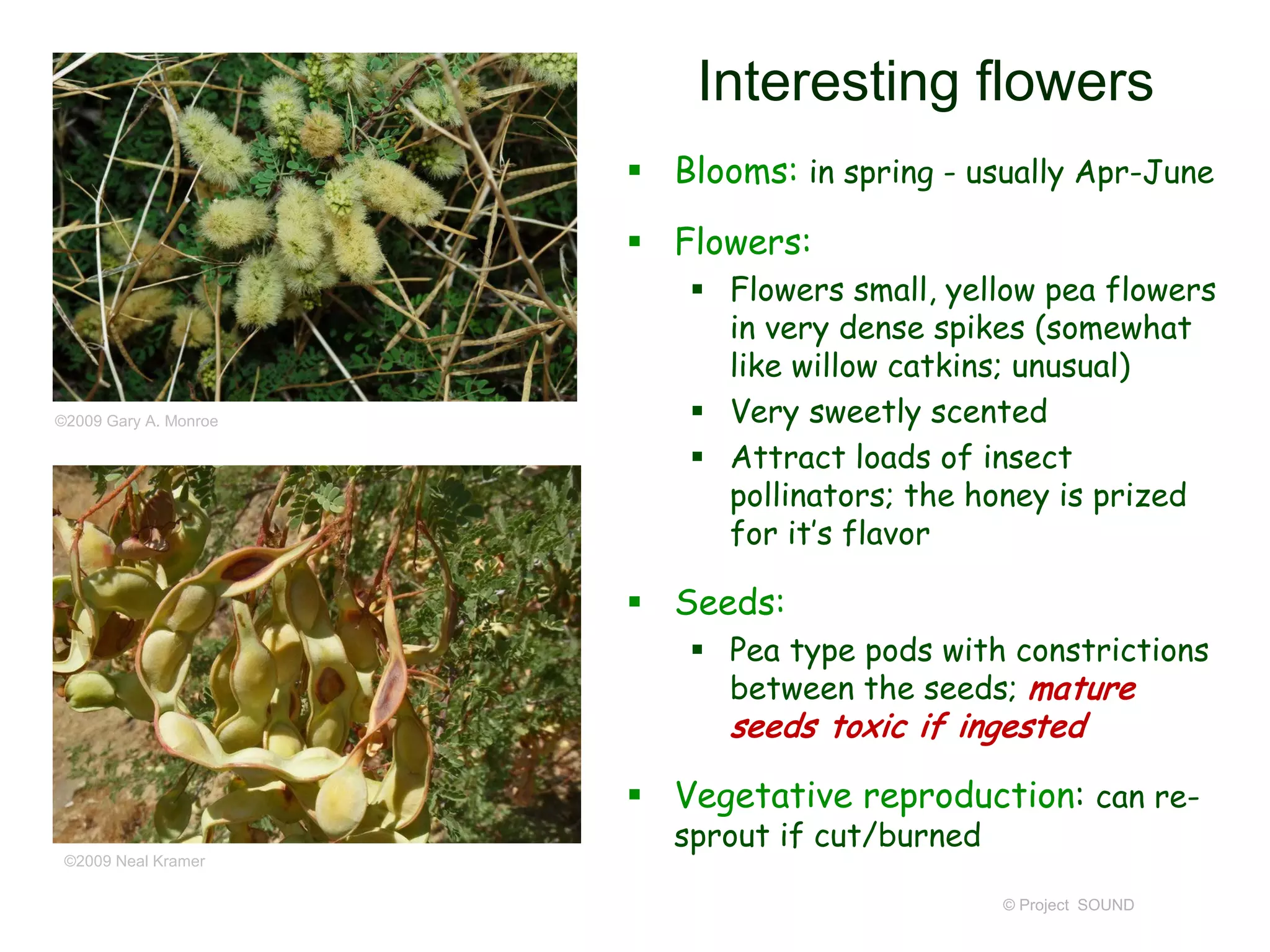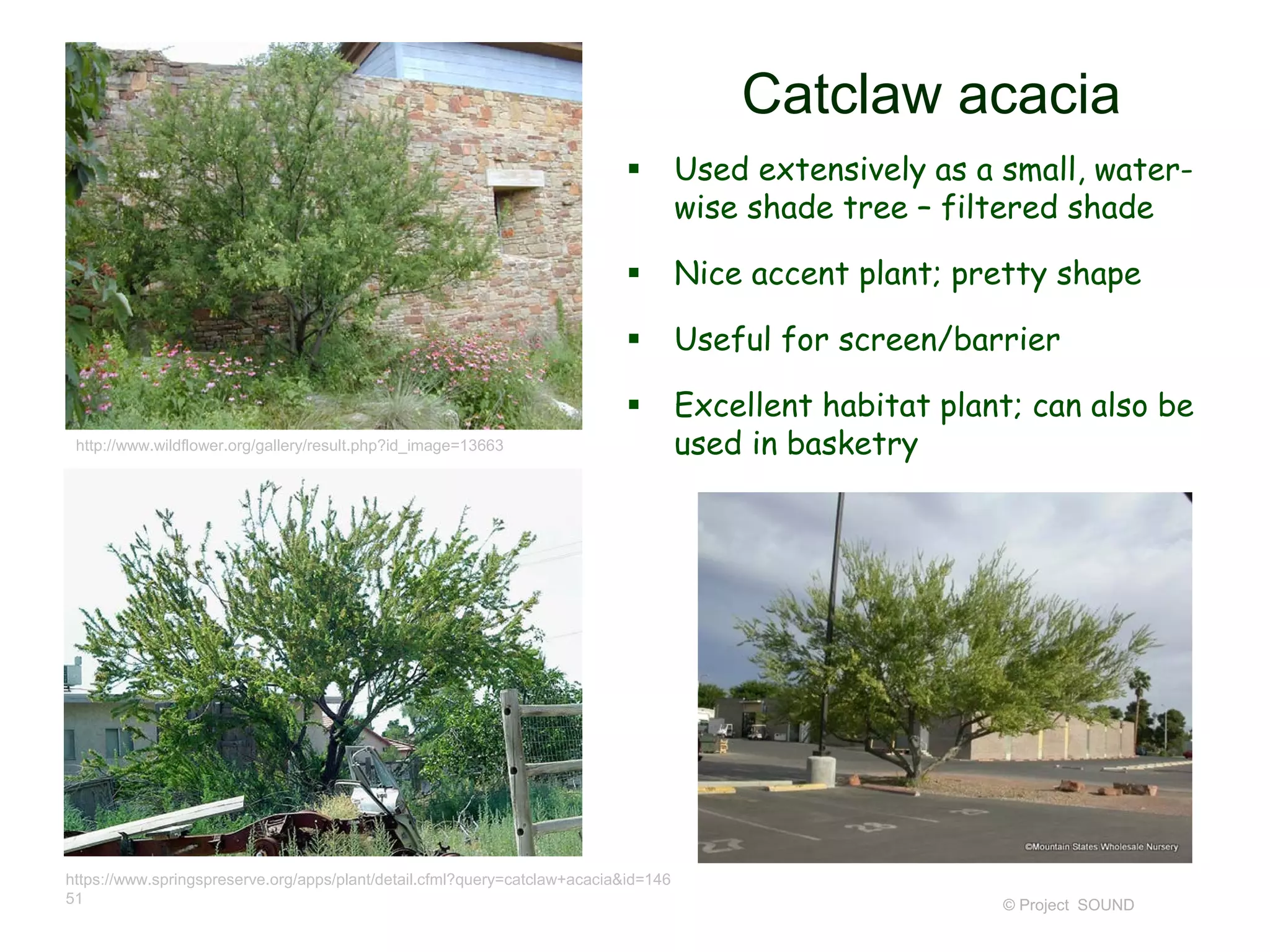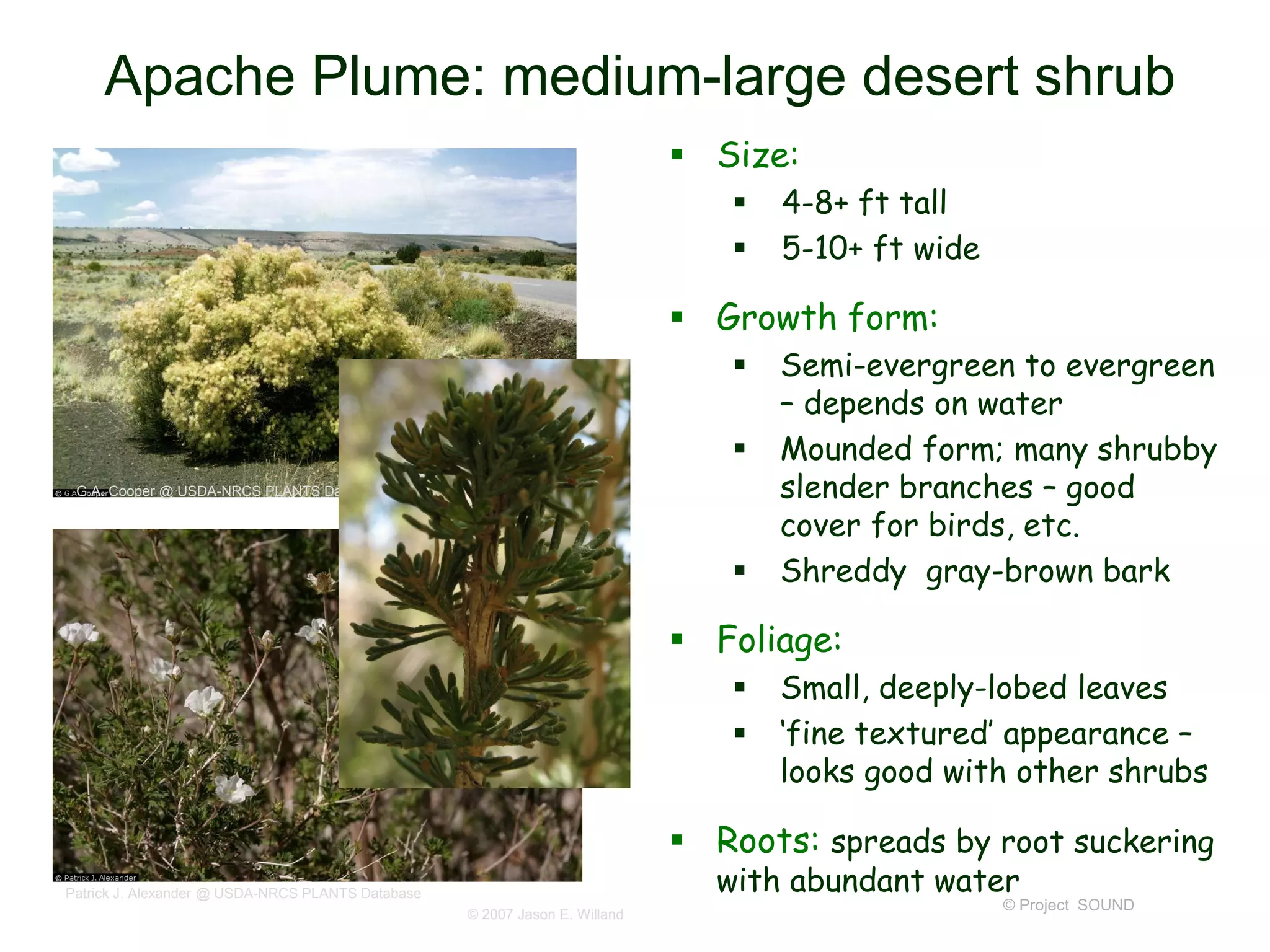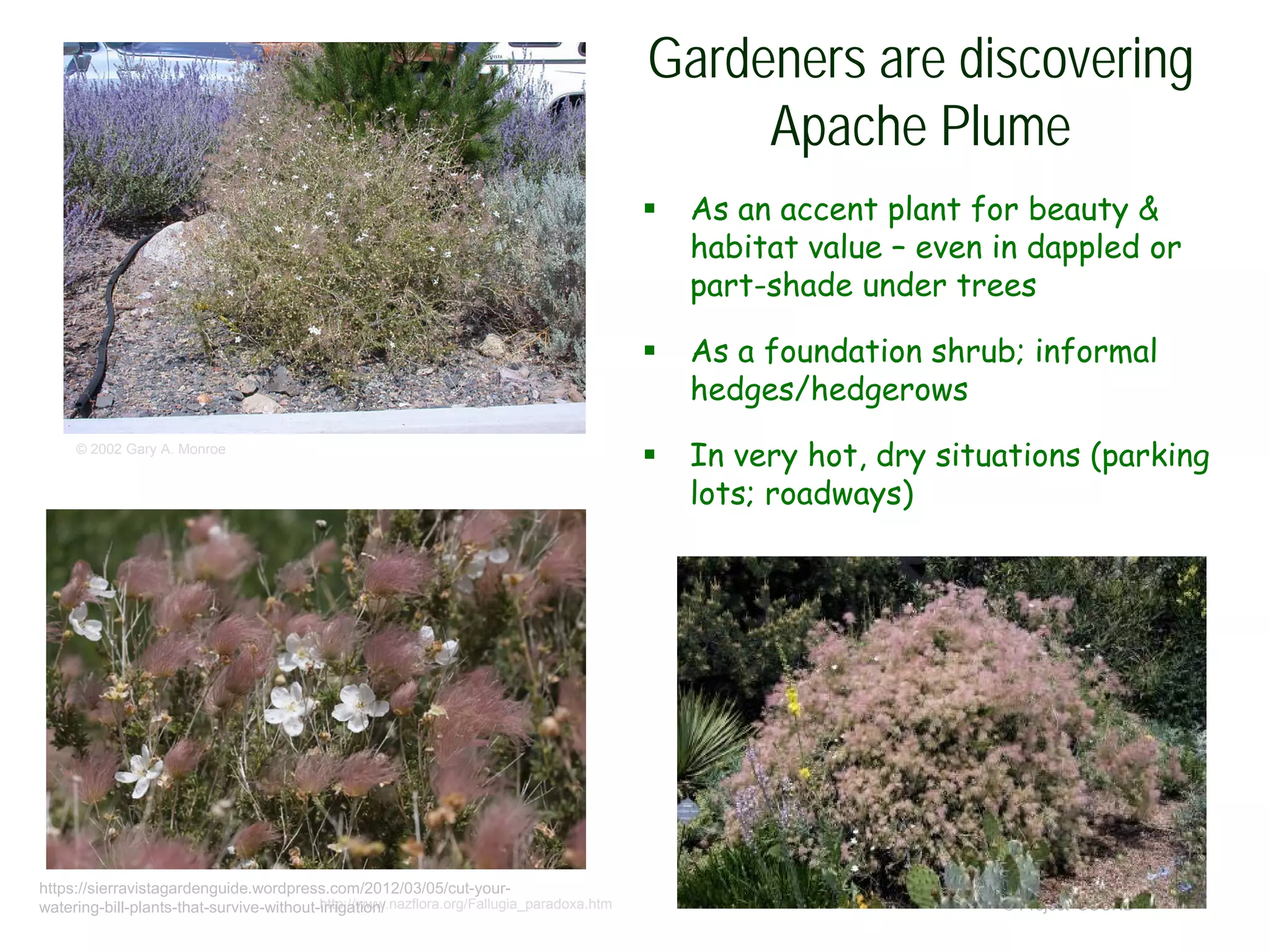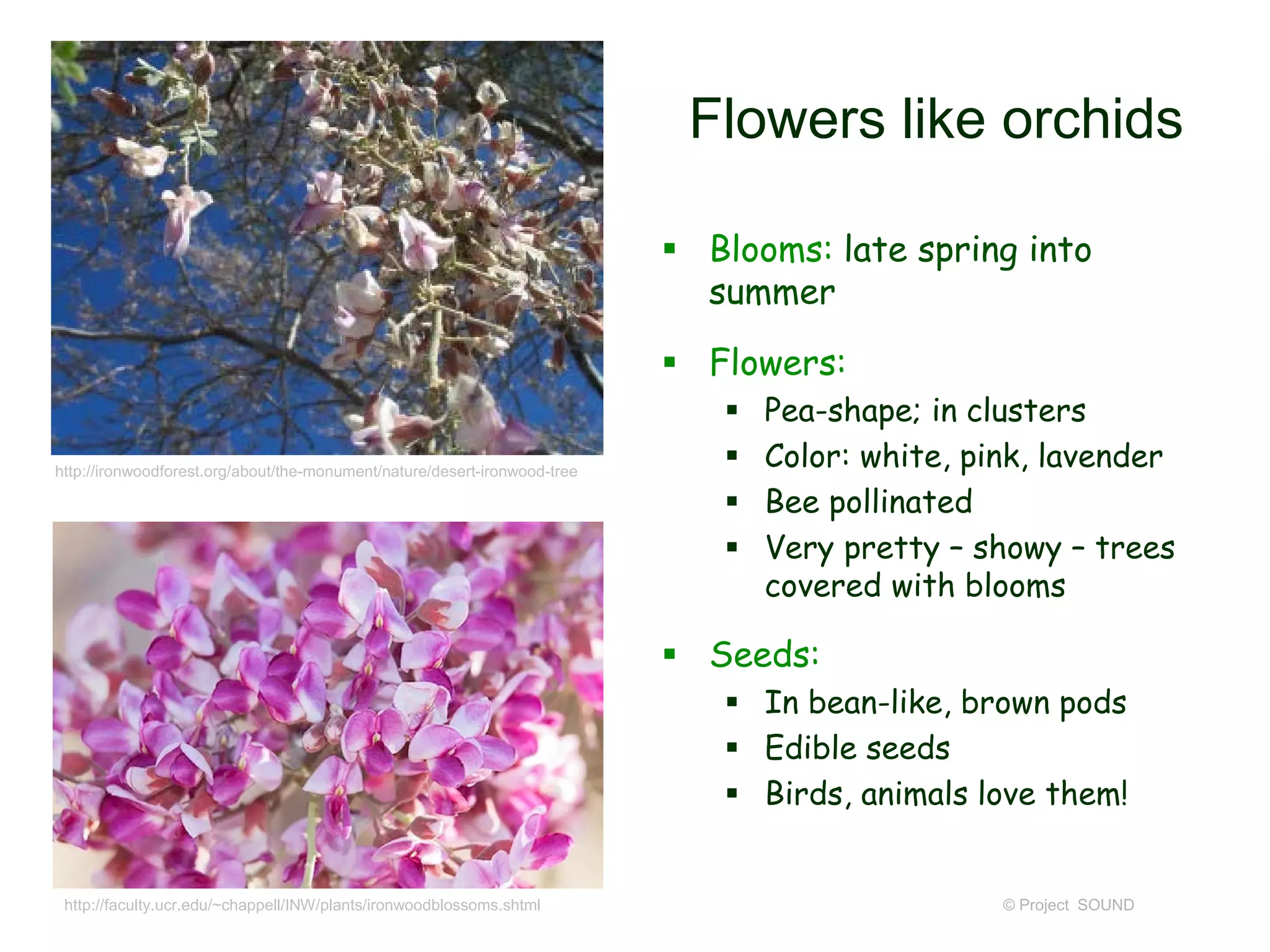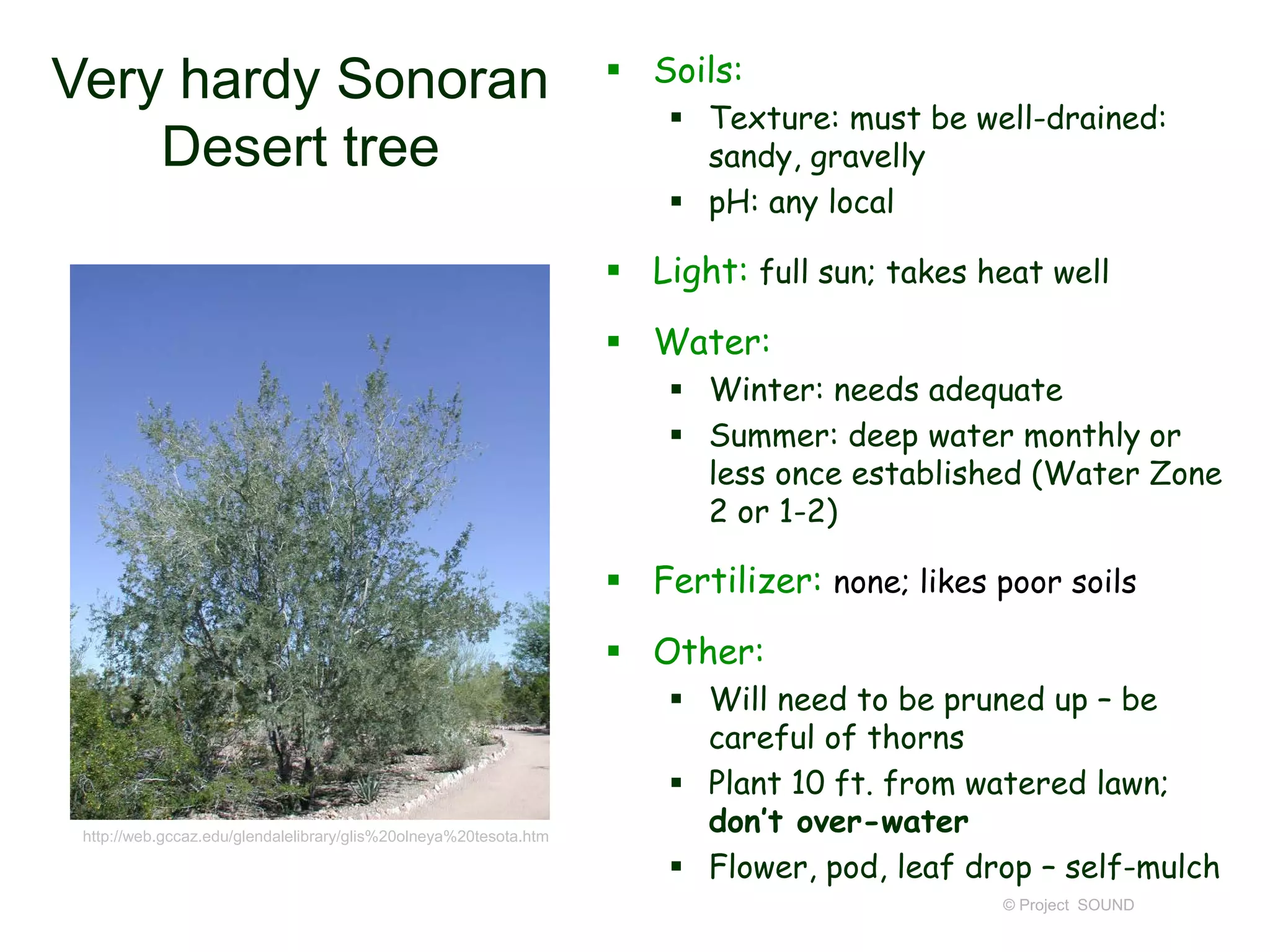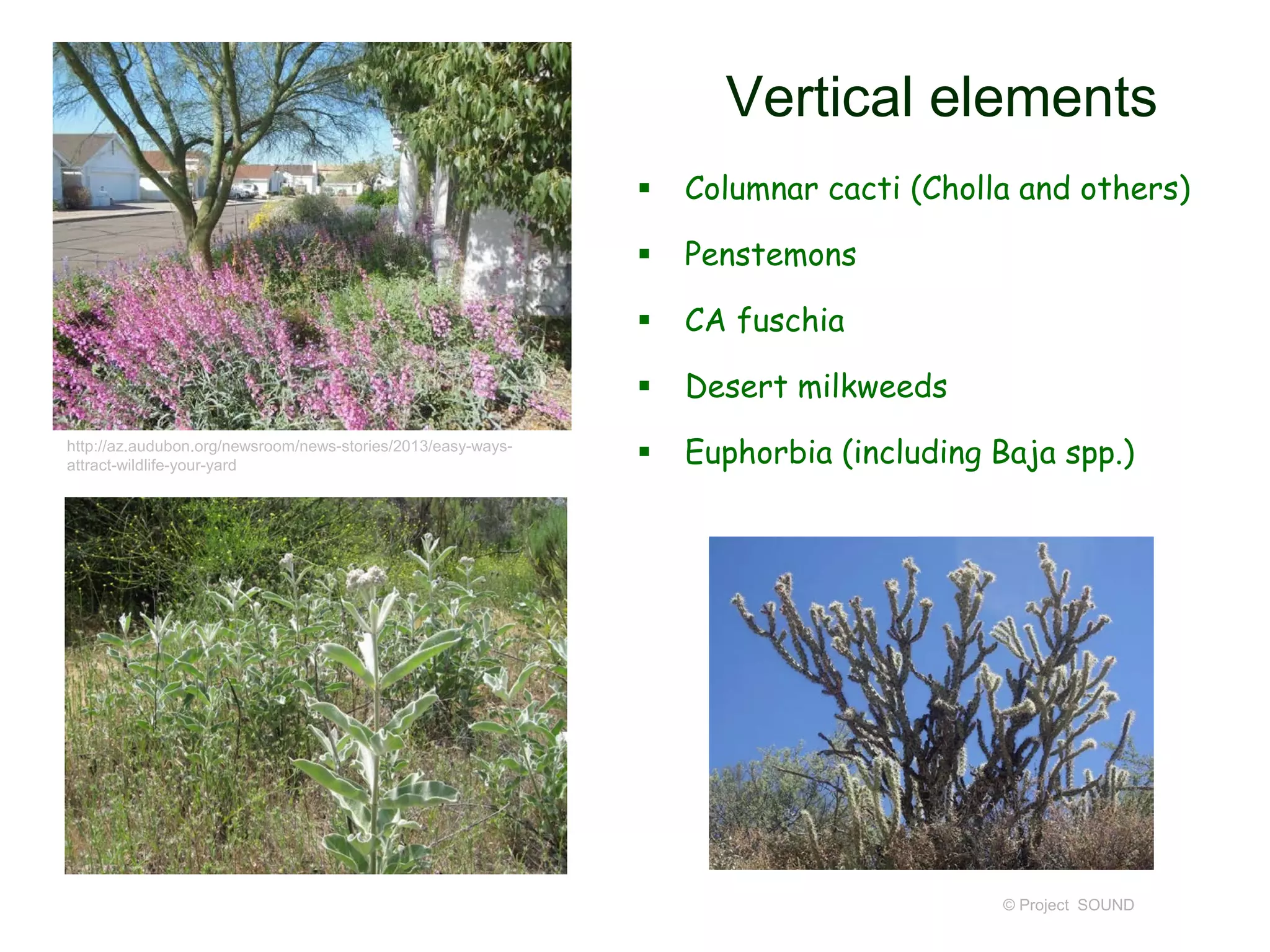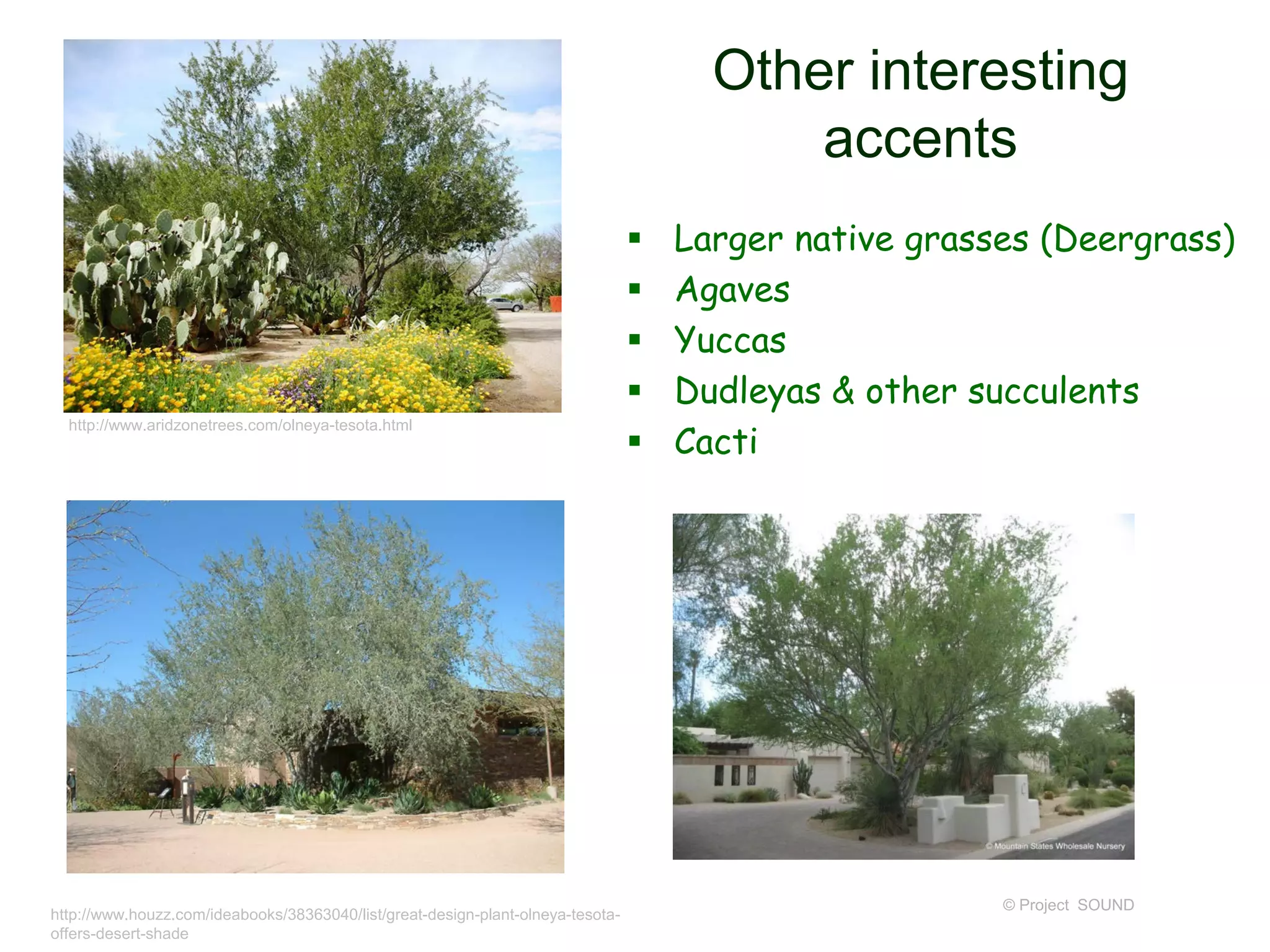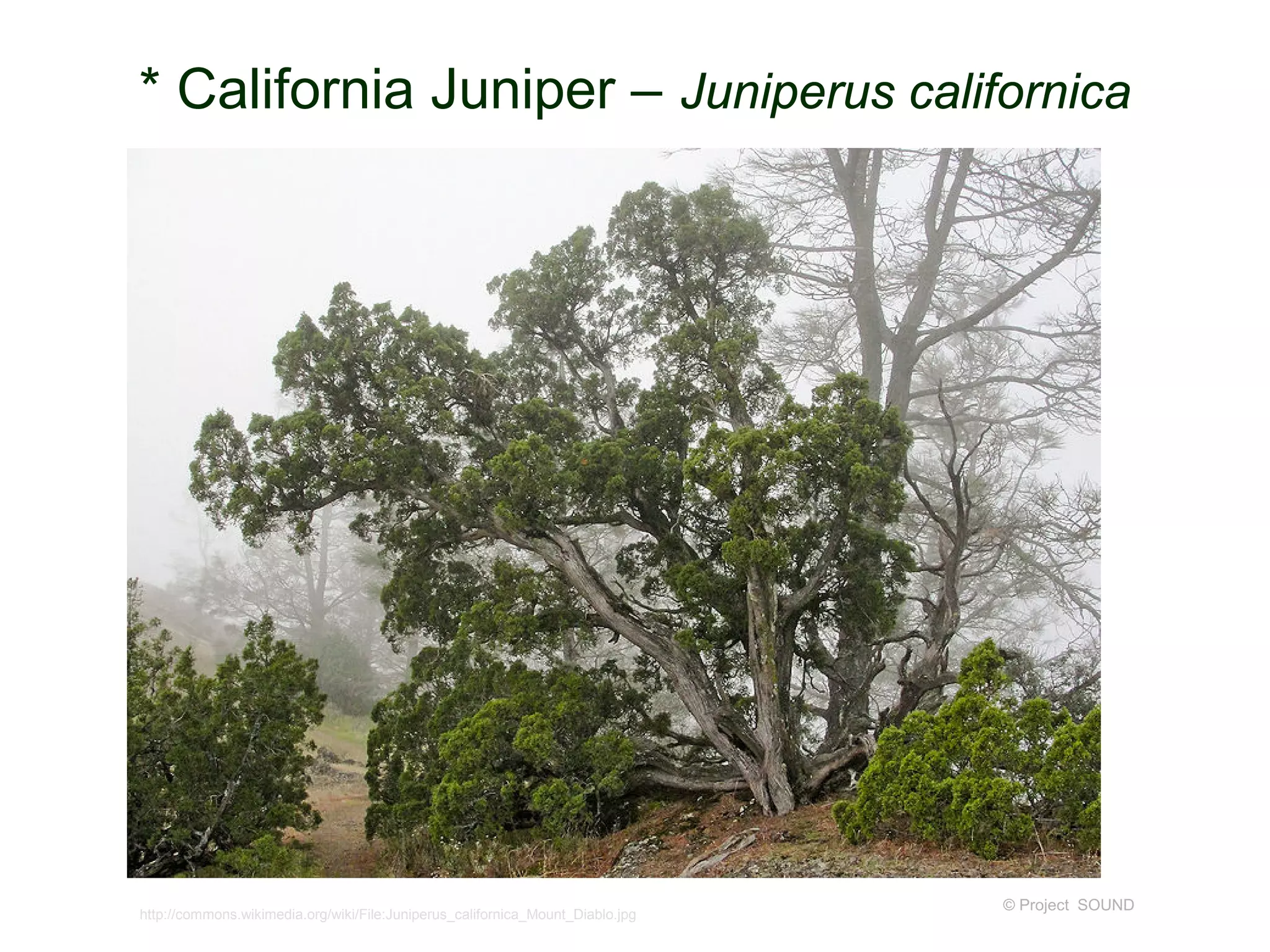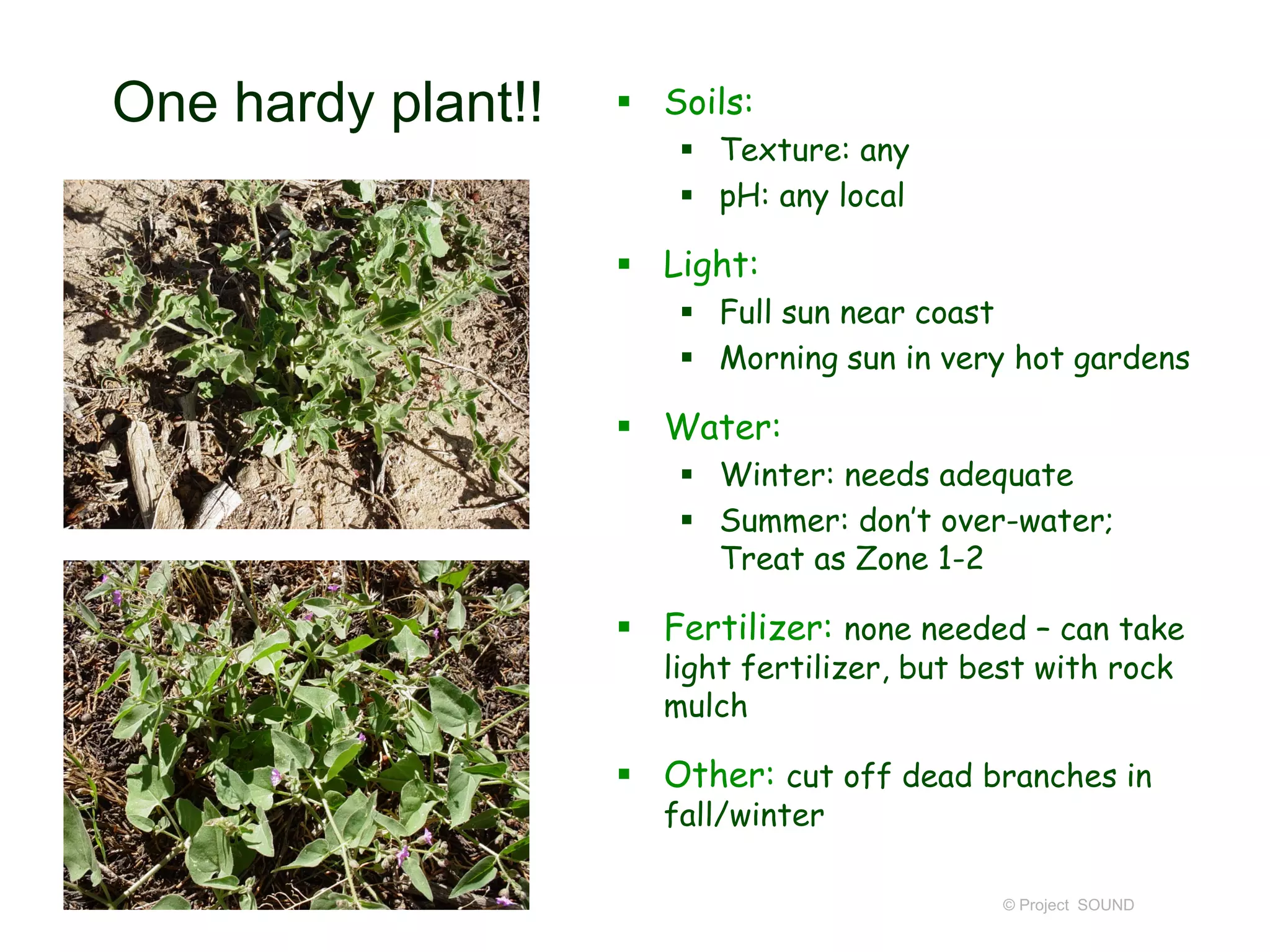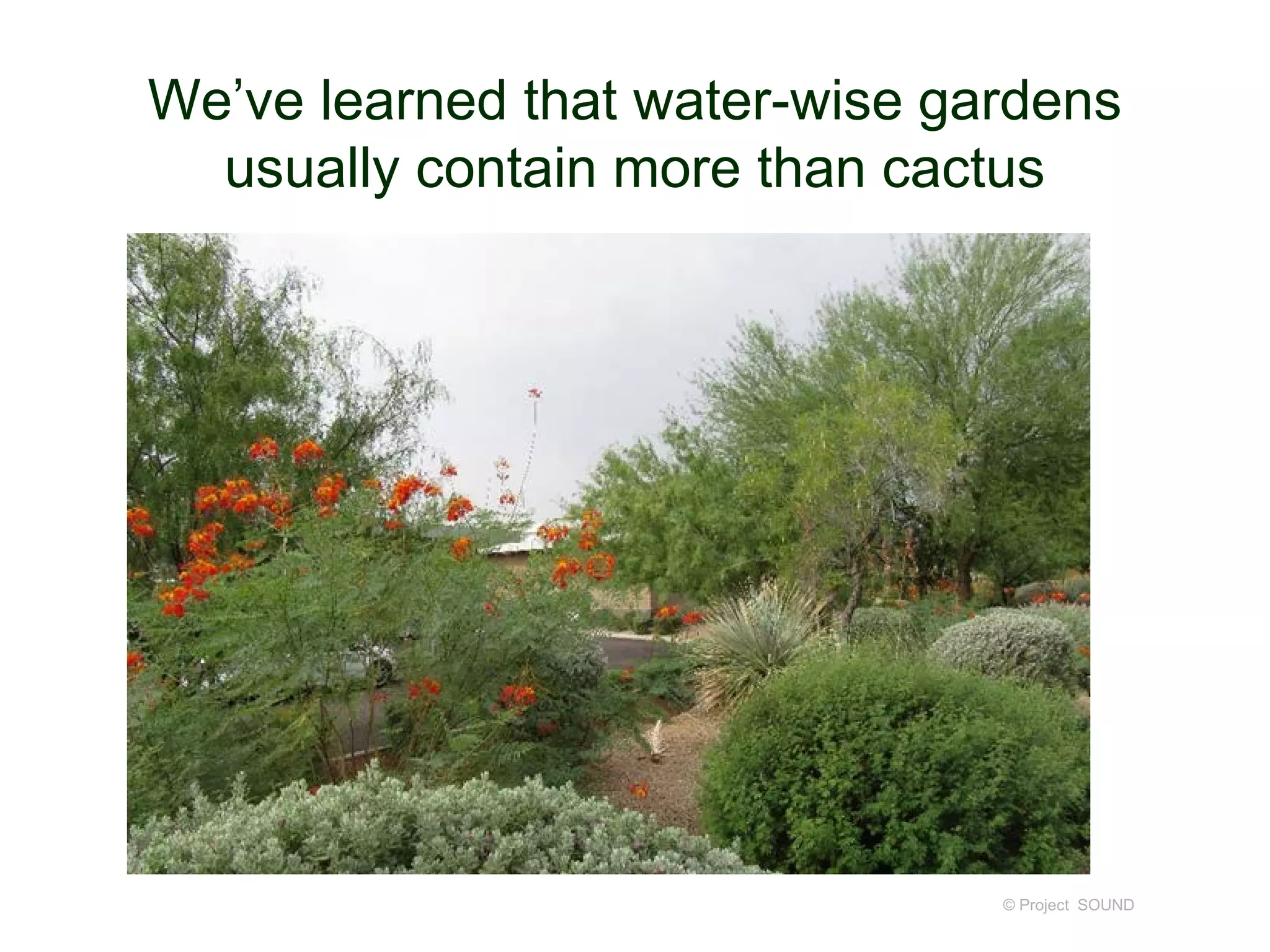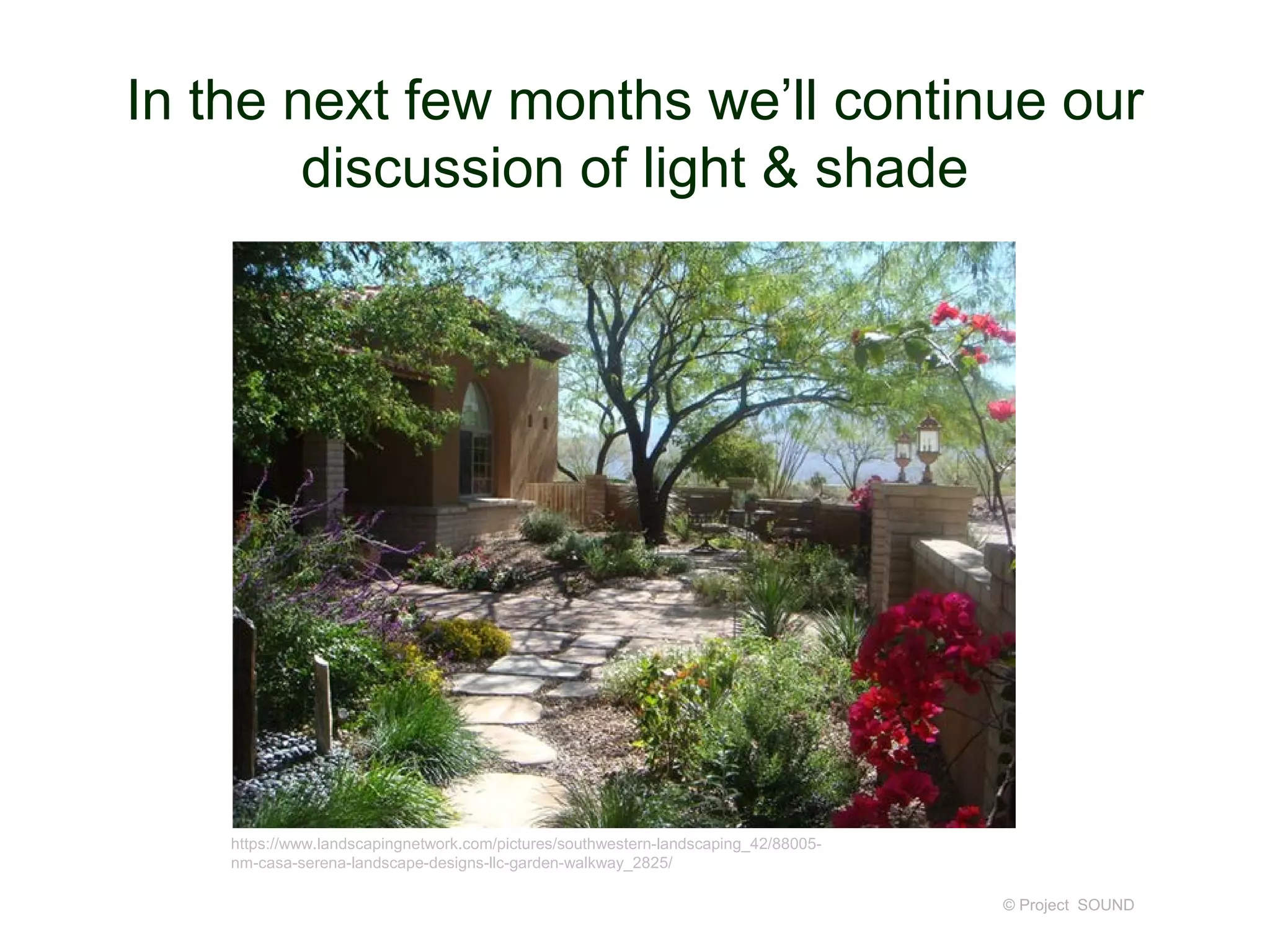The document discusses the importance of gardening with California native plants, particularly in light of climate change and increasing heat in Southern California. It highlights the benefits of shade trees and drought-tolerant plants that can help mitigate health risks associated with extreme heat. The document emphasizes the need for adapting gardening practices to ensure sustainability and resilience in urban gardening amid changing climate conditions.




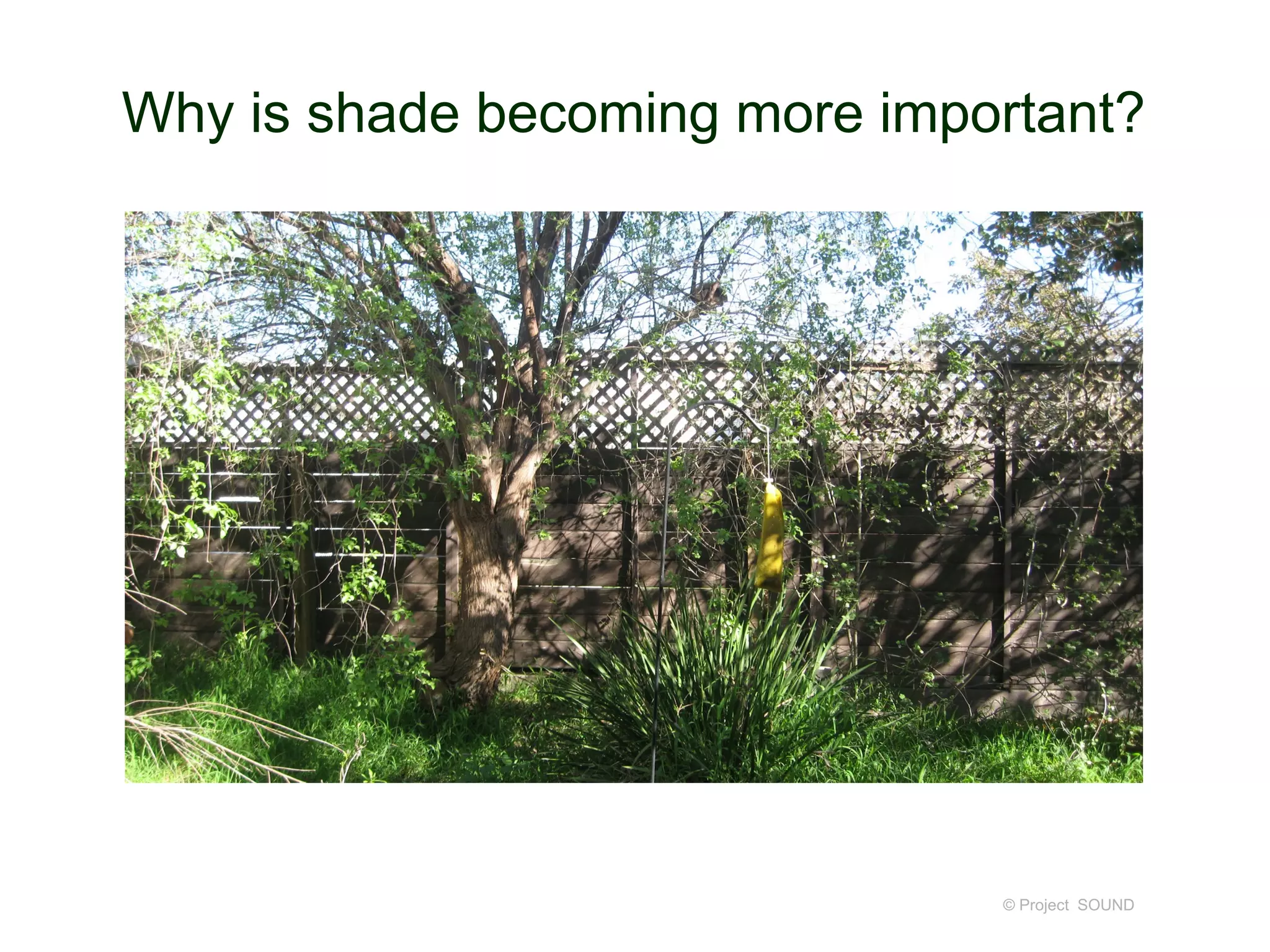



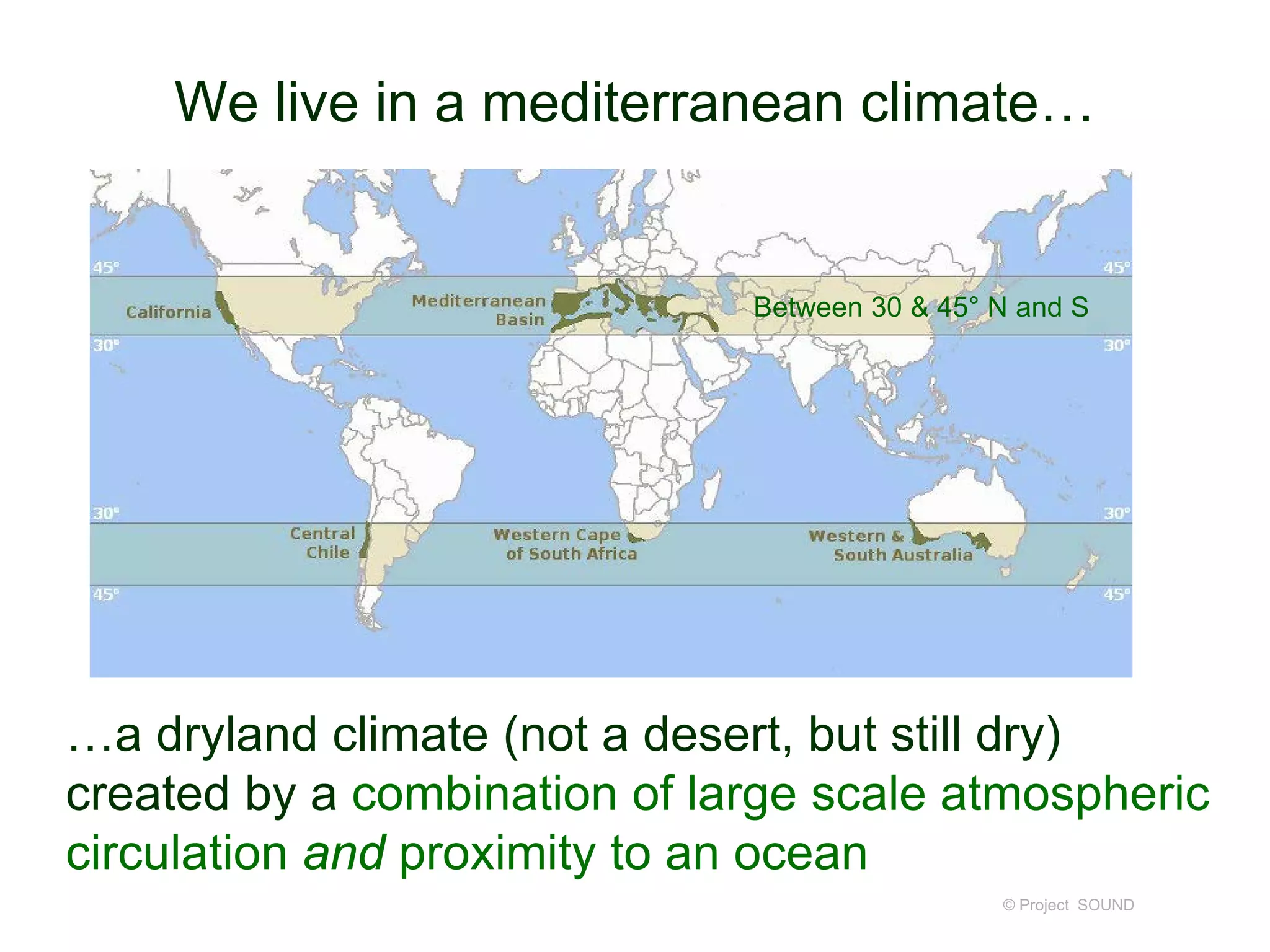





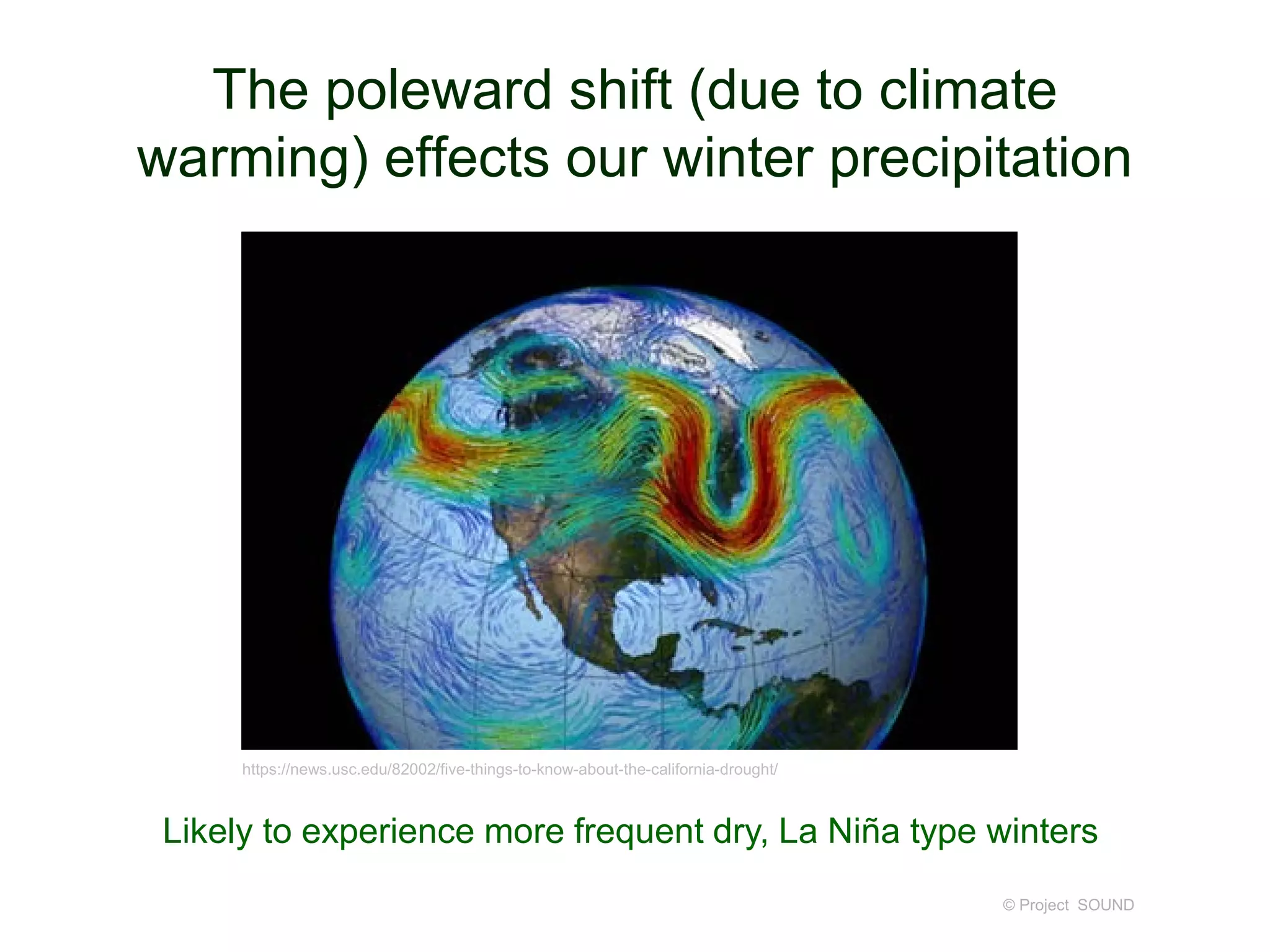


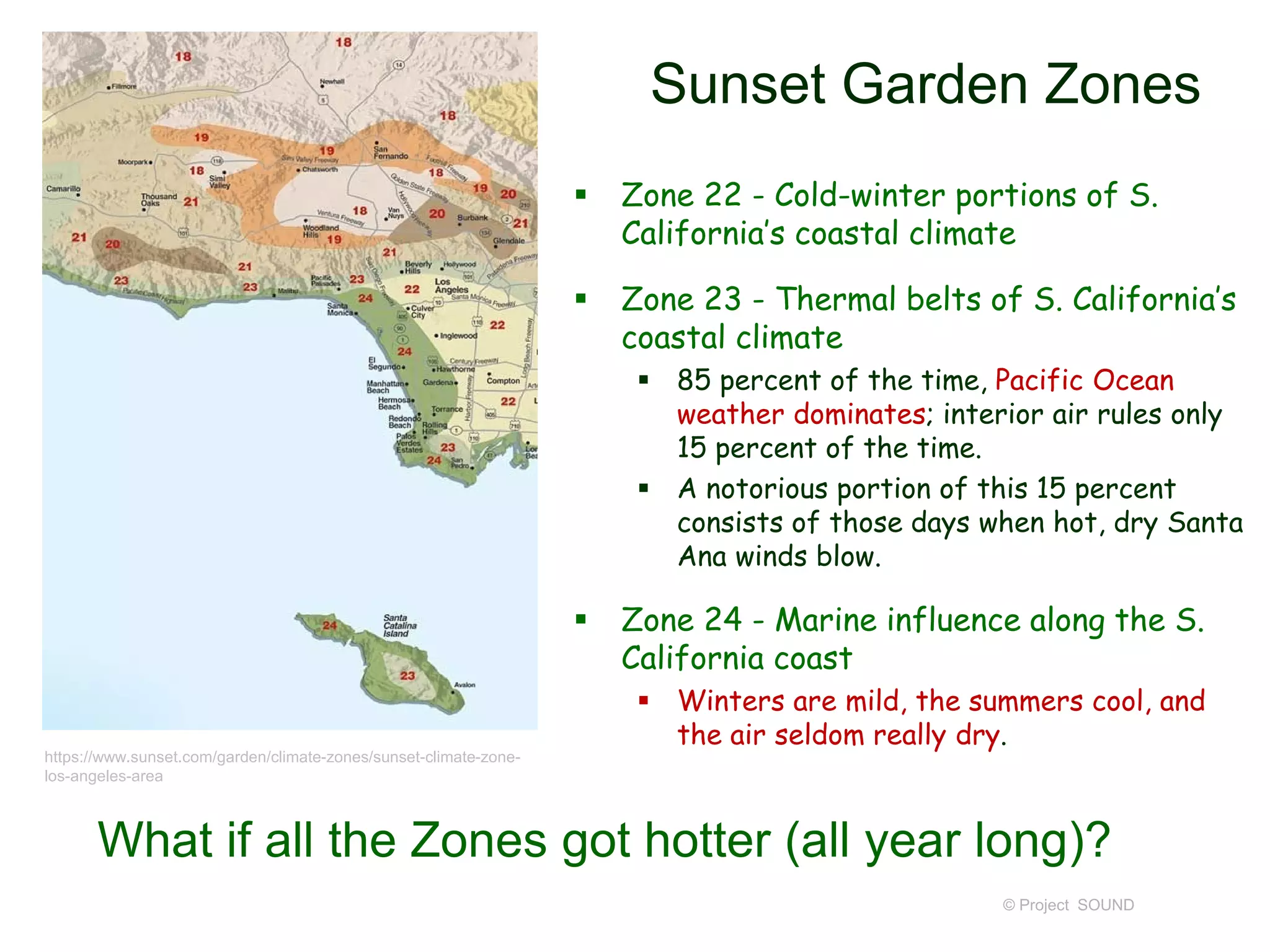

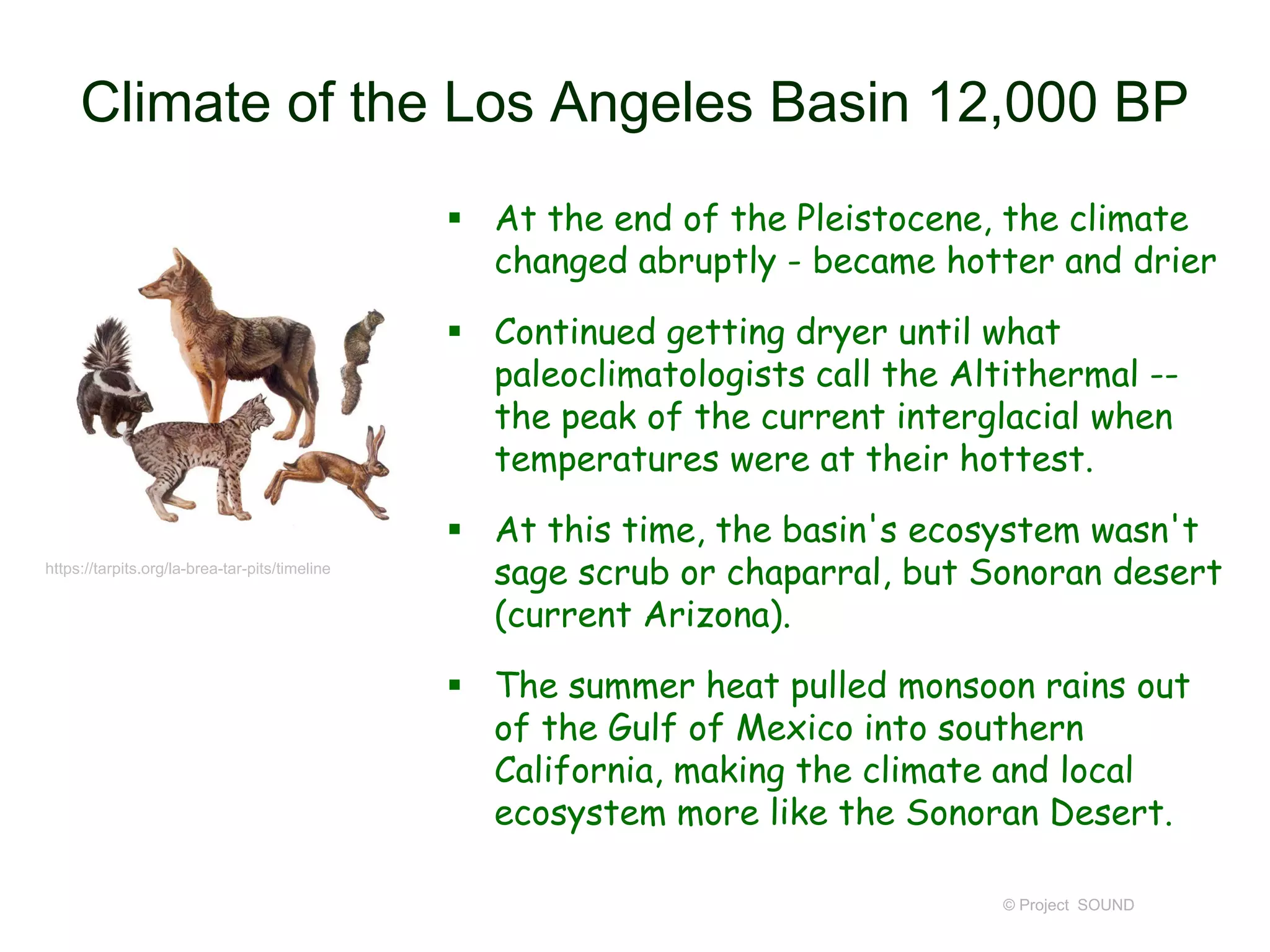

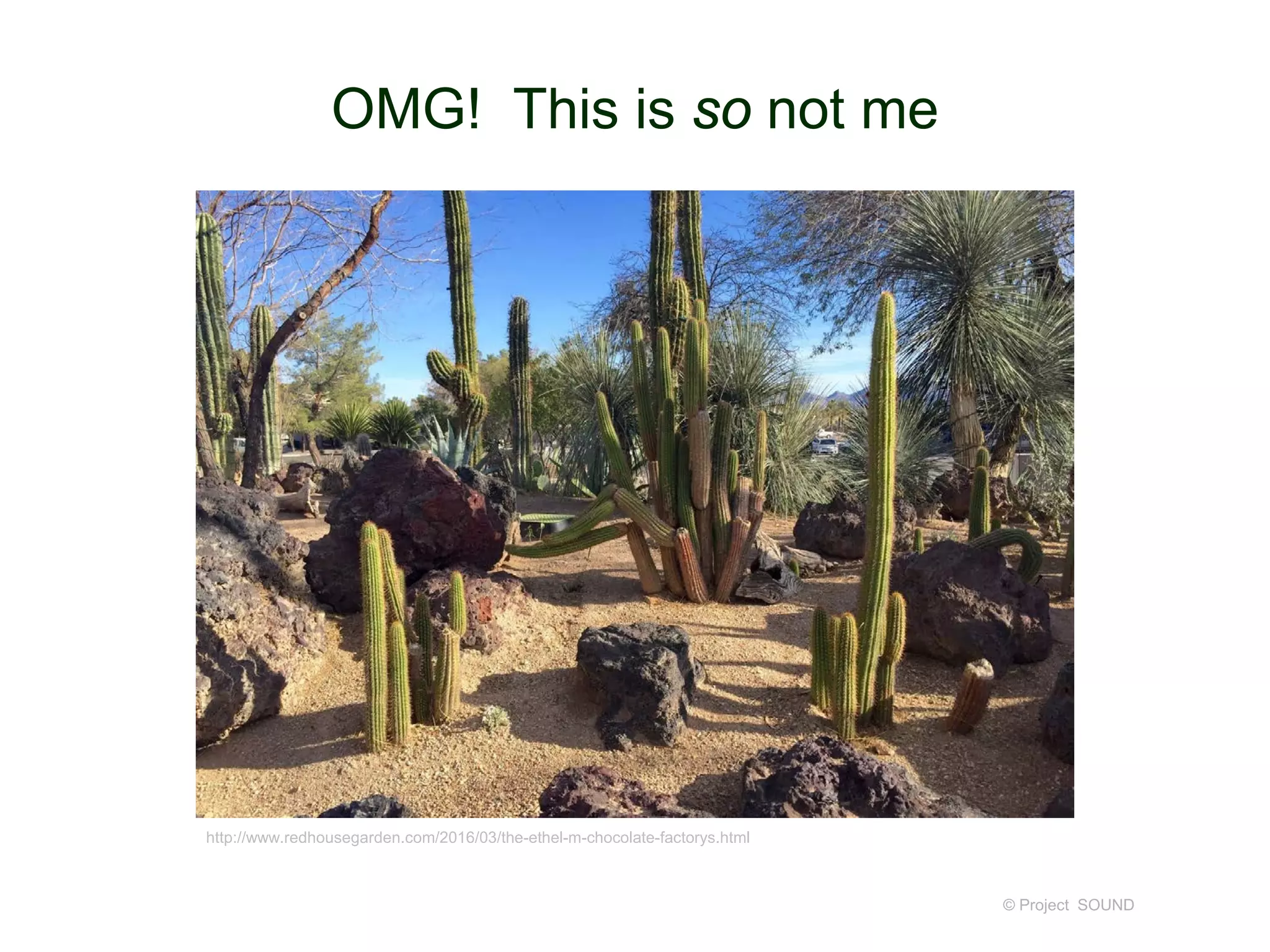


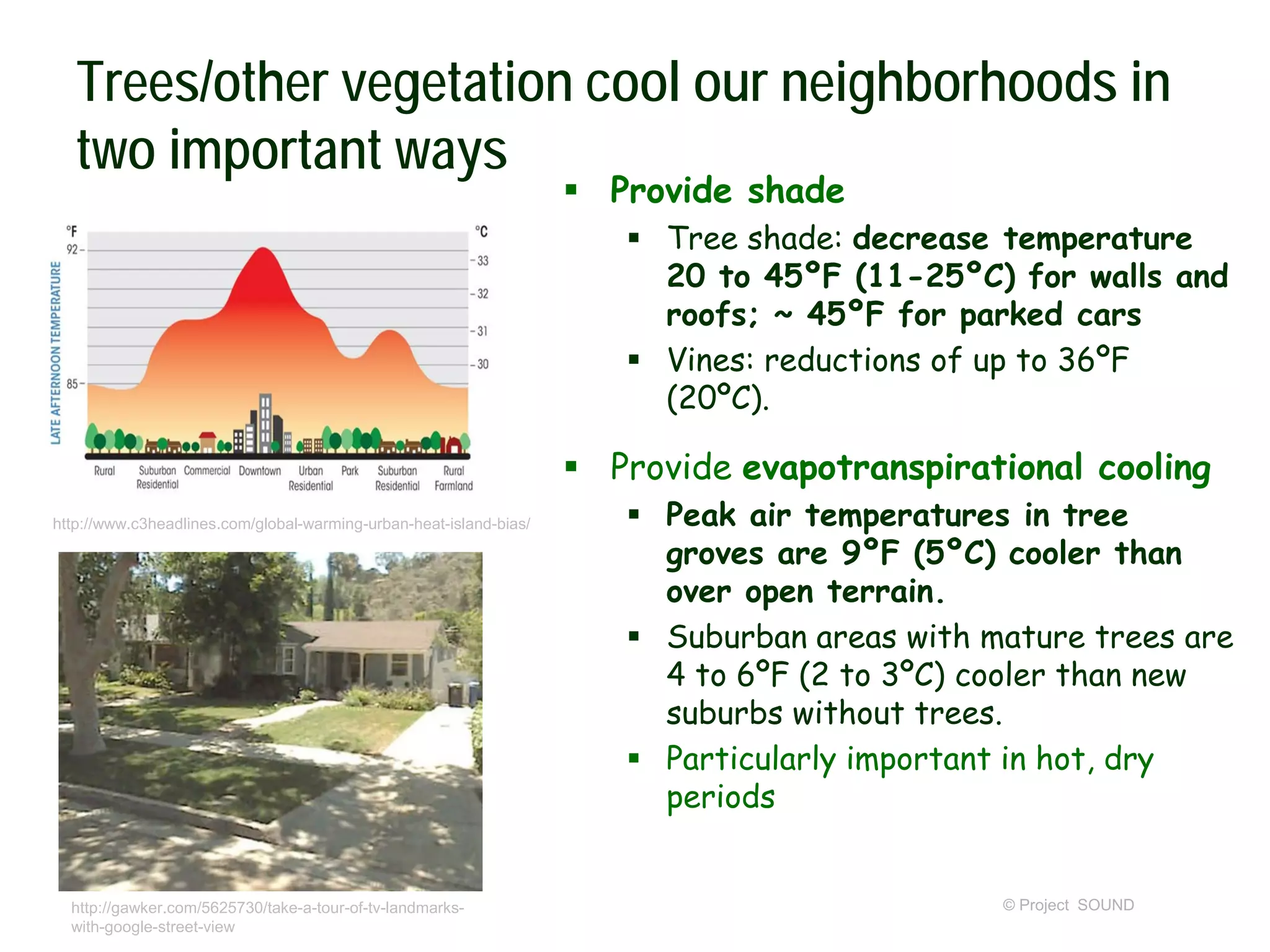


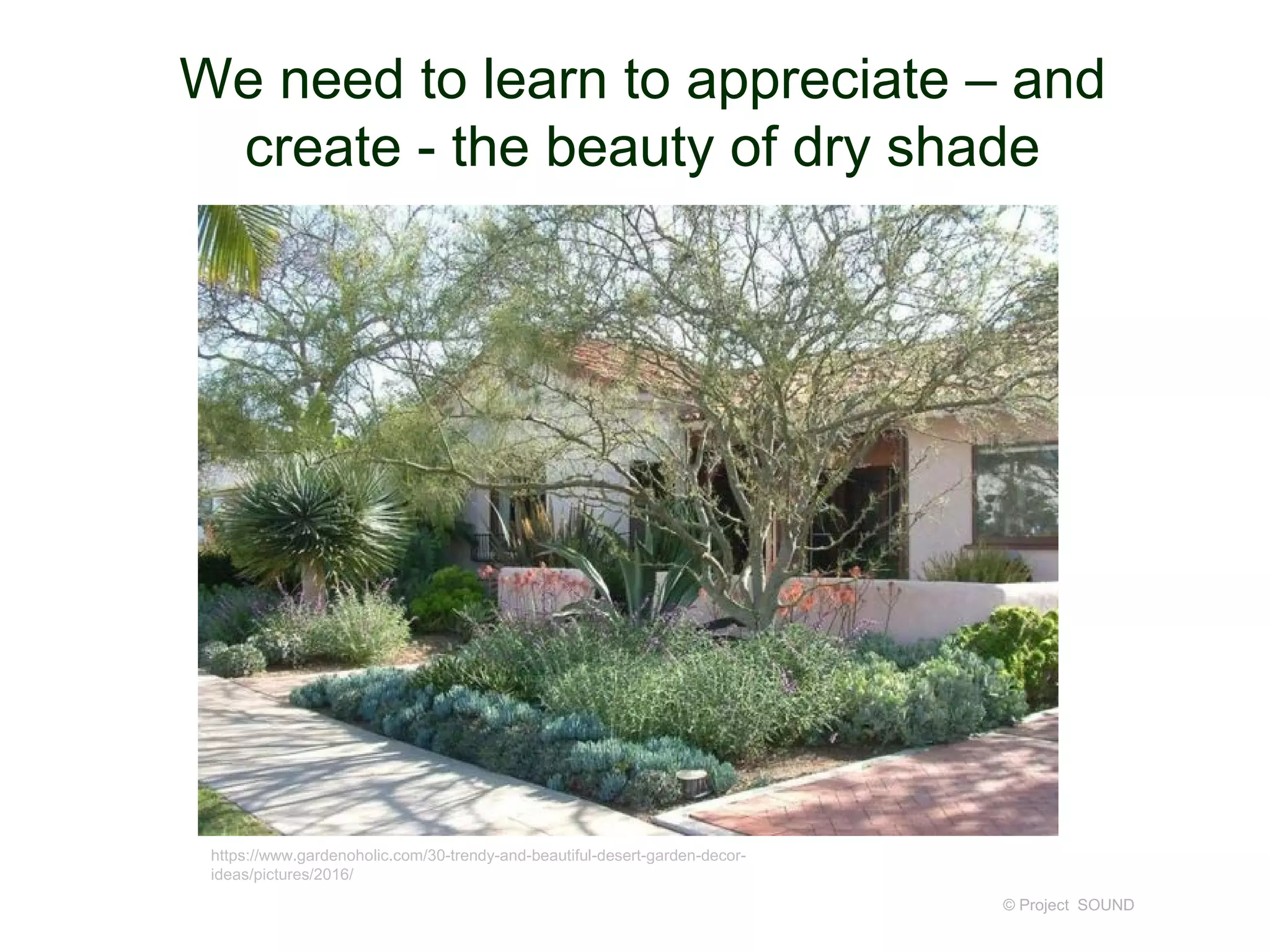
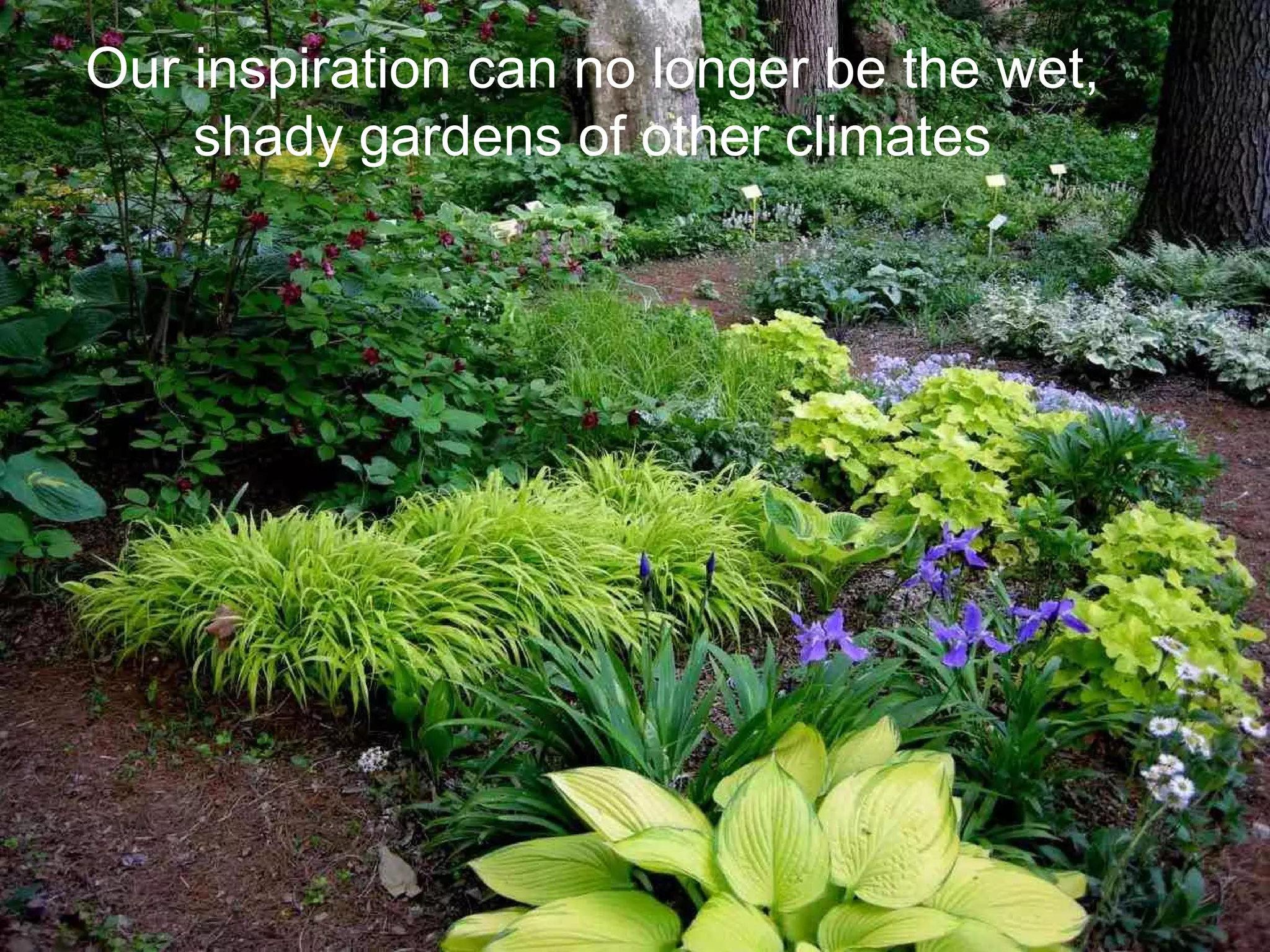



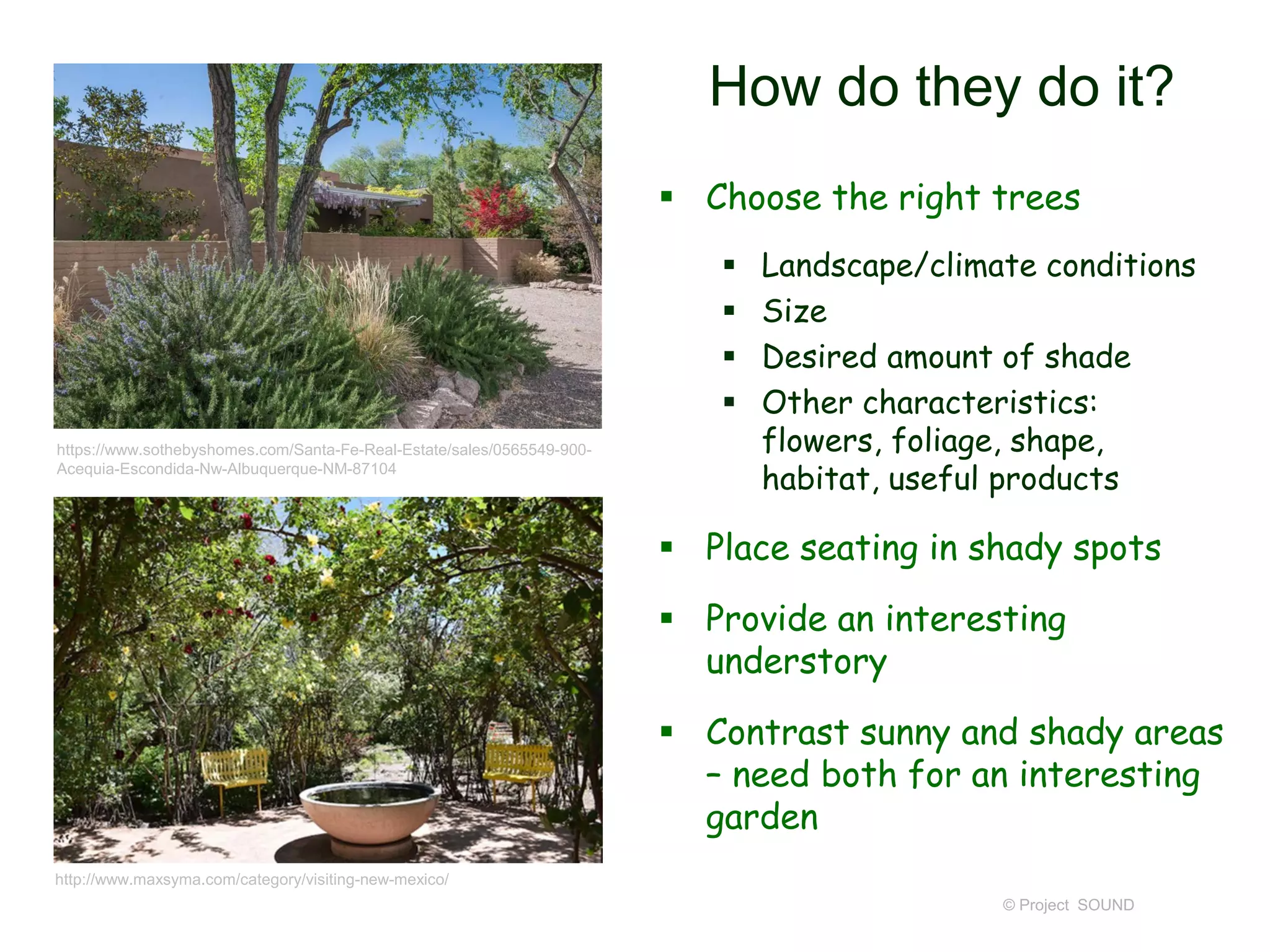


![Desert Microphyll Woodland
Along seasonal desert waterways, arroyos
of the Colorado Desert [Sonoran Desert in
general]
Stored runoff water stored under and along
the sandy or gravelly beds supports a rich
shrubby flora
Larger trees/shrubs may be dormant in dry
years – still access ground water
Warmer round-the-year temperatures and
perhaps other factors support an open to
sometimes dense woodland of small (to 5 m),
microphyllous trees, especially Fabaceae.
Smaller shrubs or perennials also
conspicuous along the arroyo margins
© Project SOUND
http://home.sandiego.edu/~pkemp/Bio112-Desert.html](https://image.slidesharecdn.com/shade-2018-180305154847/75/Shade-2018-36-2048.jpg)


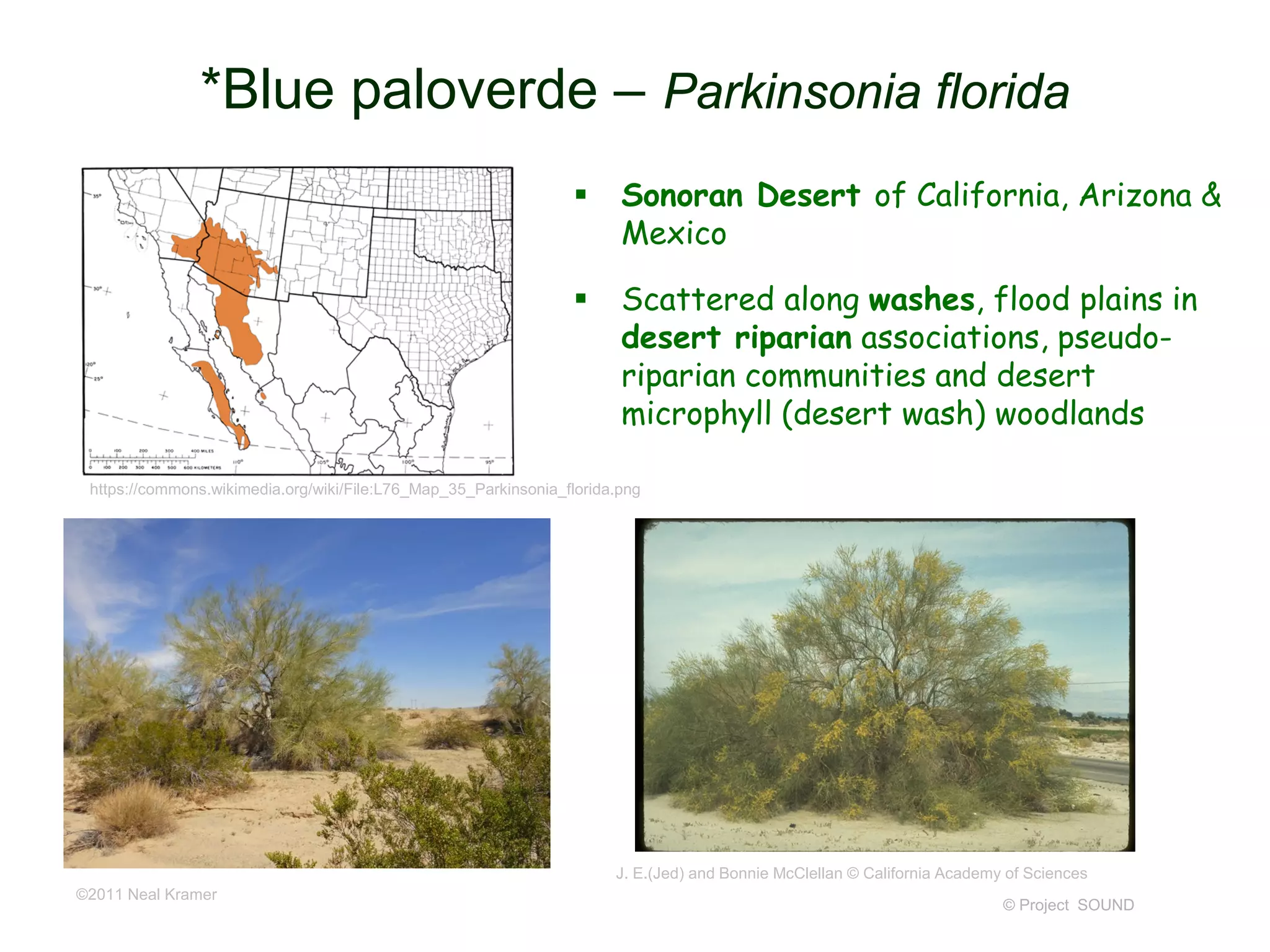




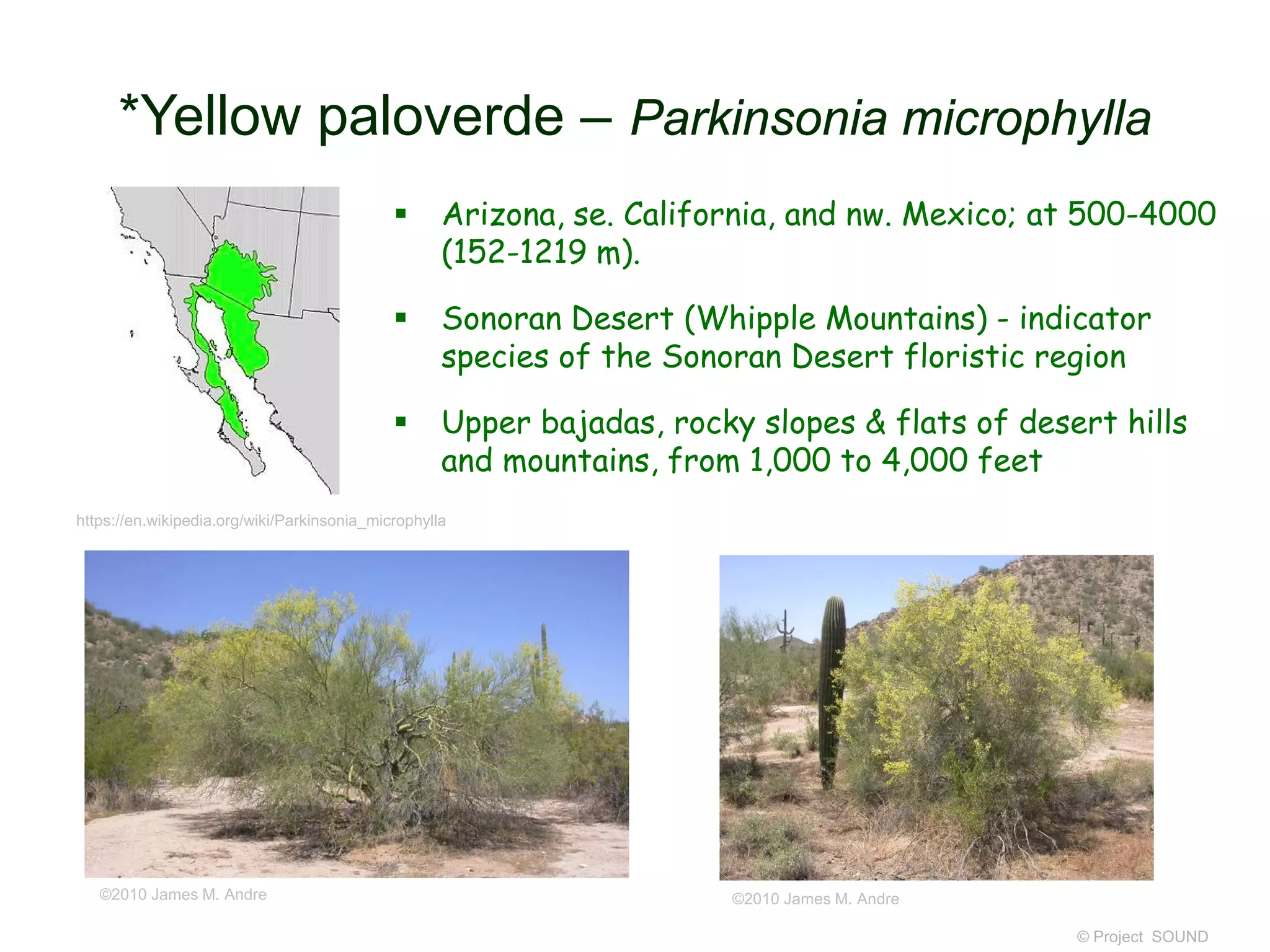

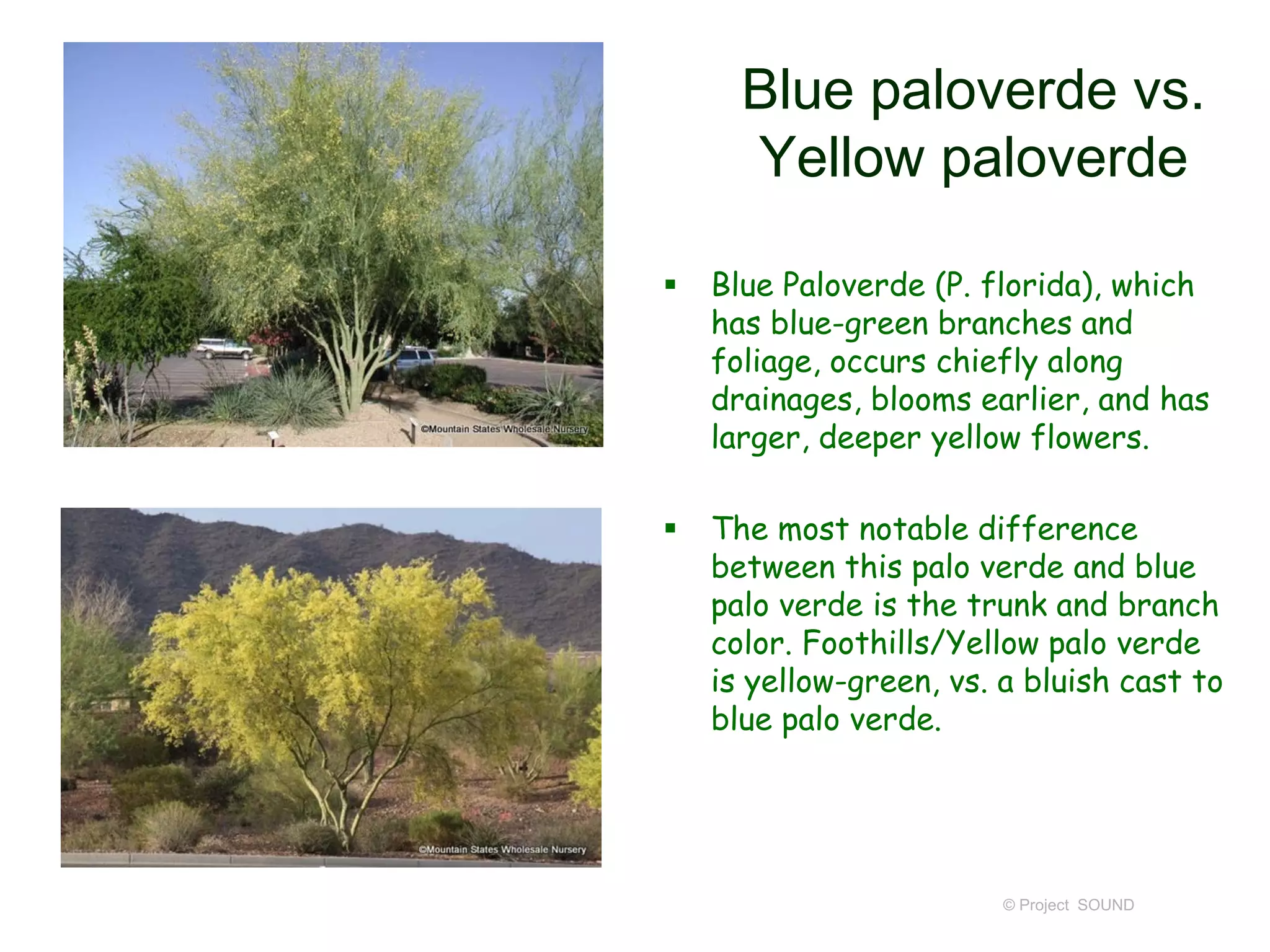
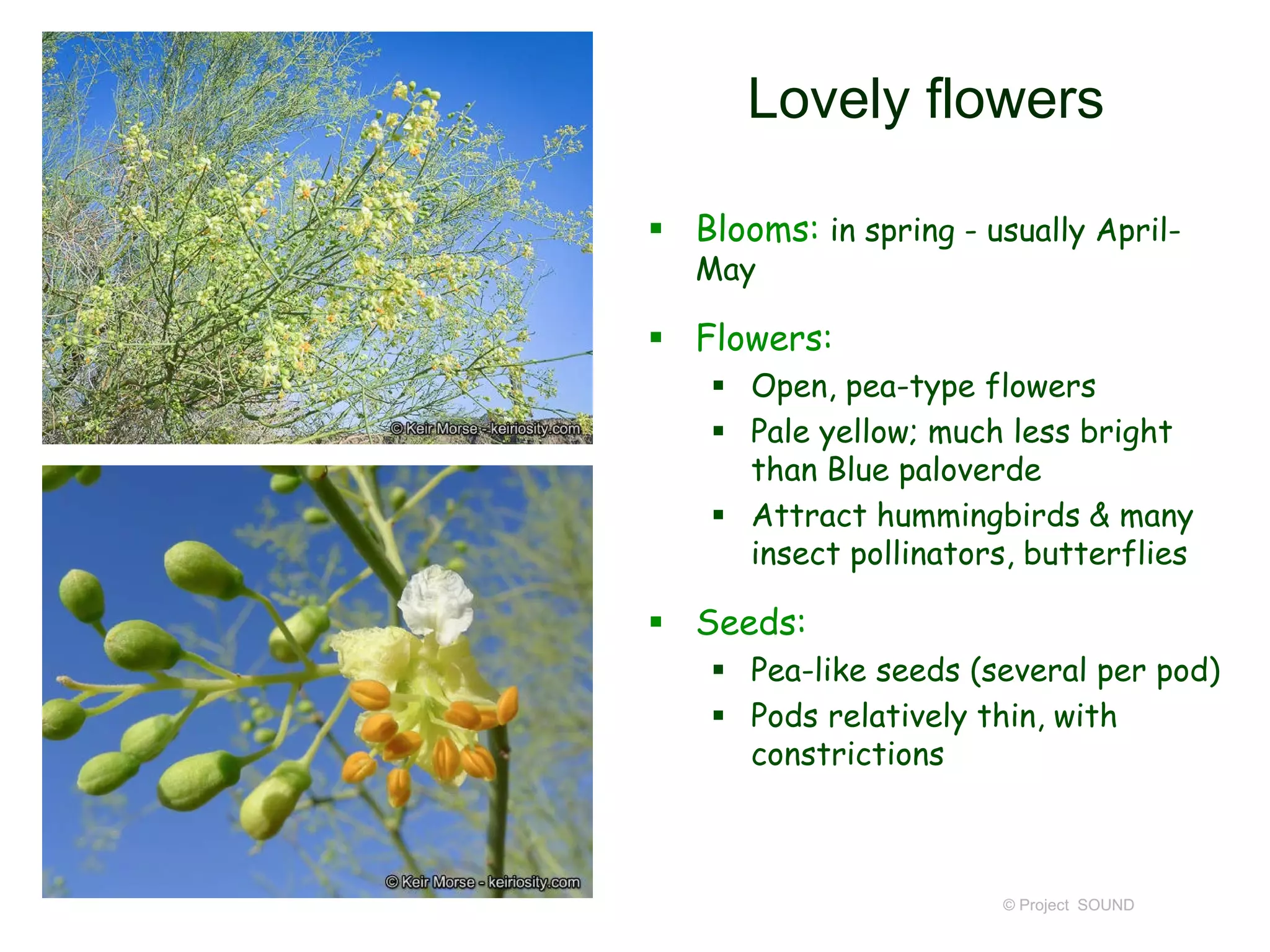


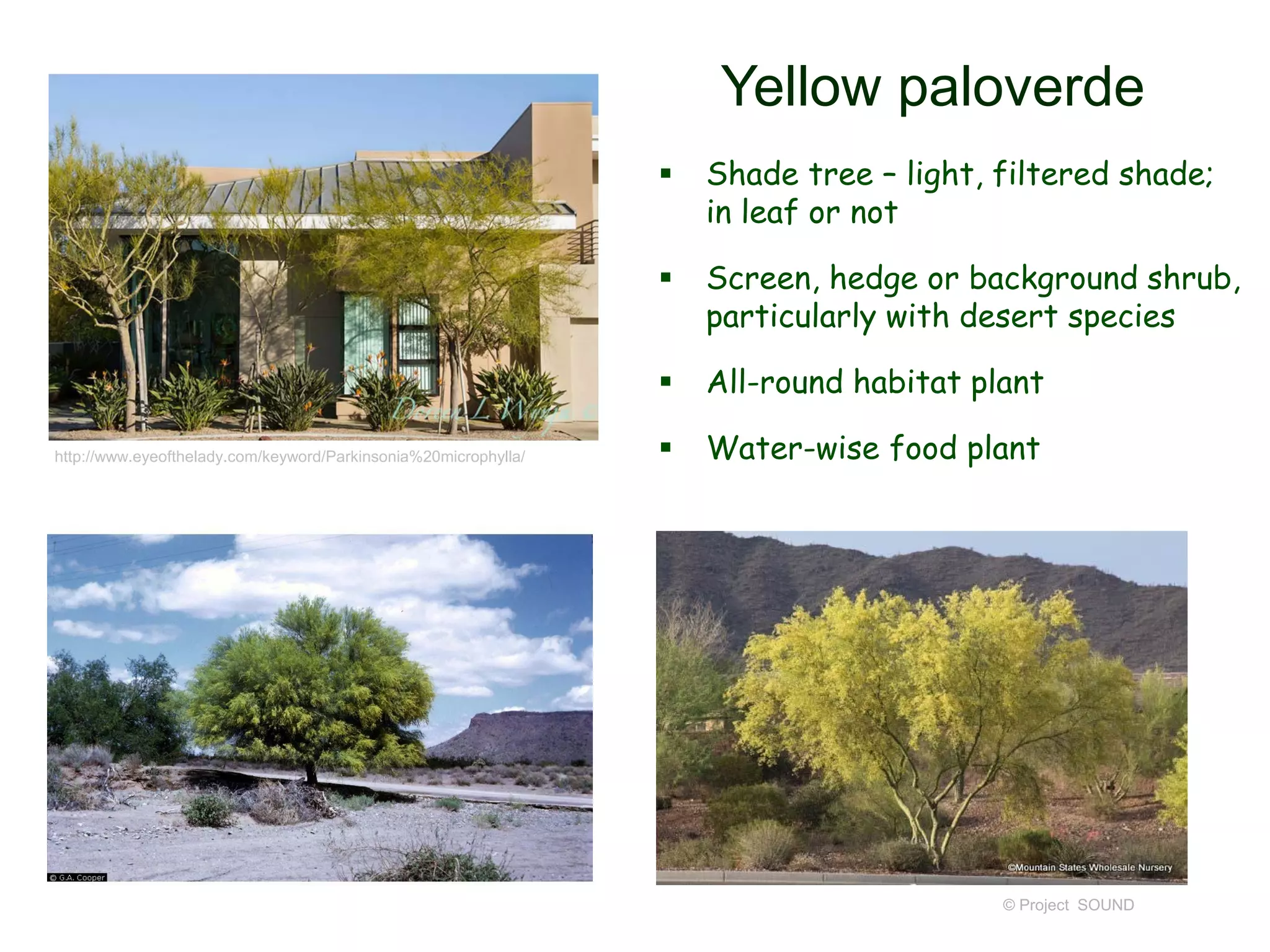
![Grades of shade in
the dry garden
Full sun - all day sunshine or a
full afternoon of sun.
Filtered (light or high) shade –
dapple bright shade under small-
leaved/drought deciduous trees
[Palo verdes; Desert willow]
Part shade - morning sun and
afternoon shade after 12 p.m. Or
shade under small-leaved trees,
such as Mesquites, Ironwood.
Full shade - no direct sun during
the day because of dense
overhead foliage or buildings.
© Project SOUND
http://sabinocanyonblog.blogspot.com/2009/03/whats-blooming-at-tohono-chul.html](https://image.slidesharecdn.com/shade-2018-180305154847/75/Shade-2018-51-2048.jpg)




